

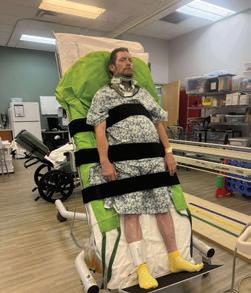
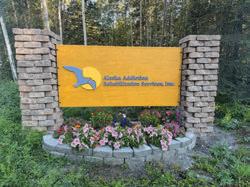

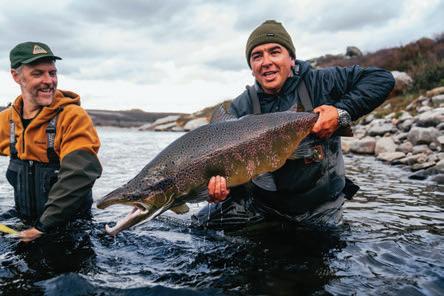







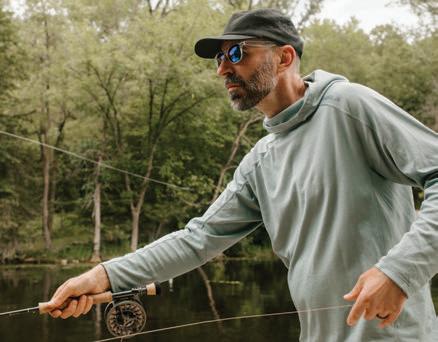



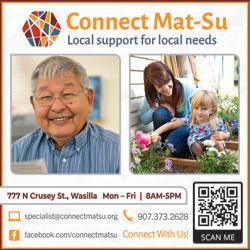
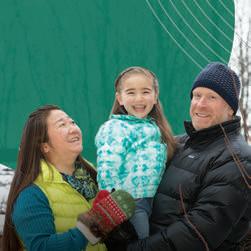


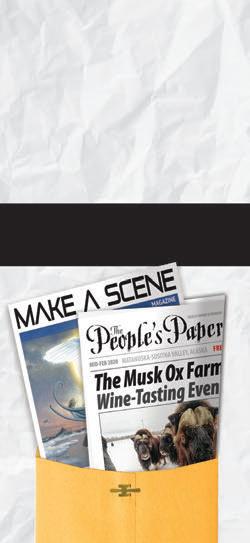






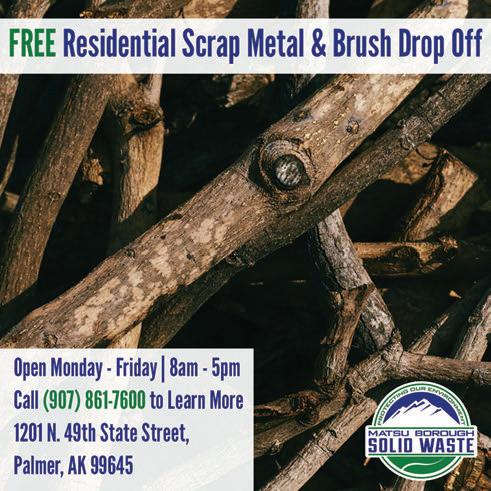
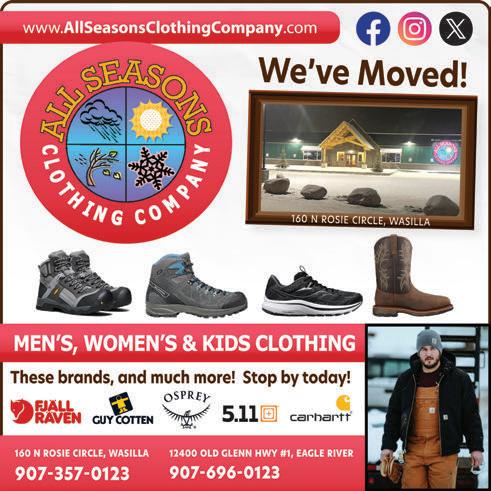

Contributed by Cindy and Mel
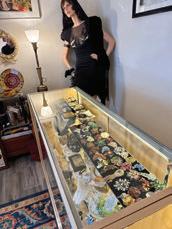
We’ve officially moved! Winter’s Cache
Collectibles has relocated from the Downtown Palmer Plaza to our new home at
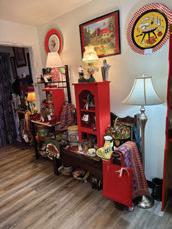
5031 E Mayflower Ln, Suite 3, Wasilla—just off the Palmer–Wasilla Highway on the access road past Shennum Drive. Our vintage gift shop is filled with

one-of-a-kind treasures, including collectible glassware, vintage jewelry and brooches, women’s hats and purses, snow globes, Wizard of Oz collectibles, and more. We even have Mel’s fresh apple pie in a jar!
To celebrate the season, we’re holding a Halloween drawing for 10–20% off storewide, running from October 27th through

Contributed by Jessica Jones-Stotler
At REACH 907, we believe healing happens in relationships. For years, our camps
and community programs have been the starting point— where children laugh, play, and begin to rebuild trust. As those relationships grow, families often turn to us for deeper support.
One caregiver recently shared, “My children have grown to really work through their feelings, and we have grown closer as a family.” That kind of transformation is why we do what we do—and why we are expanding our care. We are proud to announce that REACH 907 is now licensed as a Therapeutic Foster Care Placement Agency—a step that strengthens our
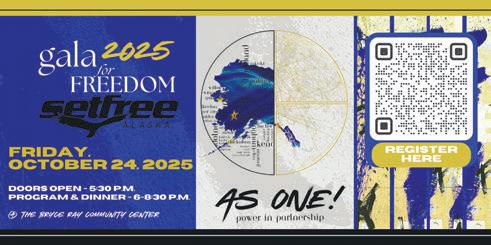
ability to serve youth and families in the Mat-Su Valley.
Why Therapeutic Foster Care? Sometimes children need more than outpatient counseling or short-term support. Youth in crisis may require stabilization, respite, or a safe, structured home environment with caregivers trained to understand trauma. Therapeutic Foster Care fills that gap. The need in Alaska is urgent. According to the Alaska Office of Children’s Services, there were 2,520 children in out-of-home care as of August 2025, supported by only 1,179 licensed foster homes statewide (dfcs. alaska.gov).
As another parent told us, “Our child has grown emotionally, behaviorally, and academically since their time at REACH. The care and commitment of the staff is wonderful!” This is the kind of care we want to extend into therapeutic foster homes.
What This Means for Our Community: Becoming a Therapeutic Foster Care agency deepens our roots in the Valley. It extends the continuum of care we already provide through our wrap-around services with Resilience Behavioral Health and our
October 31st. We look forward to seeing everyone at our new location and want to give a special thank-you to all our wonderful regulars from the Downtown Plaza Mall who’ve already come by to visit and show their support. For more information, give us a call at 907-408-3815.
REACH 907 community programs (Camps and Club). The same children we first meet at summer camp can now find long-term stability through counseling, wrap-around services, and therapeutic foster families who walk with them toward healing. What It Means to Foster: Therapeutic Foster Parents are ordinary people who receive extra-ordinary training and support.
At REACH 907, families are equipped with trauma-informed tools like Trust-Based Relational Intervention (TBRI®), provided with support, and compensated for the care they provide. Foster parents become a safe place for children to heal, learn new skills, and stay connected to their community.
A Call to Action: The truth is simple: Healing begins when someone says “yes!” Every child deserves to feel safe, valued, and loved—and that starts with a home. If you’ve ever wondered how you can make a difference, becoming a Therapeutic Foster Parent may be your calling.
To learn more, call (907) 745-6200, email kristy@reach907.org, or visit www.reach907.org.
Together, we can restore hope, empower families, and strengthen Alaska’s future— one child at a time.
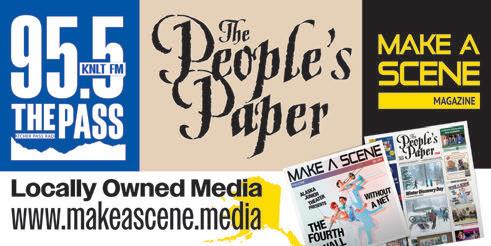






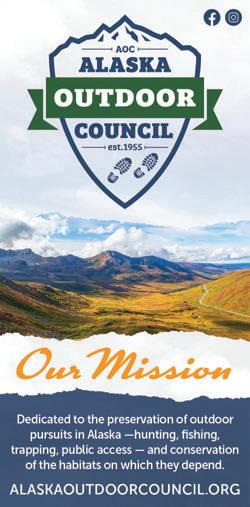










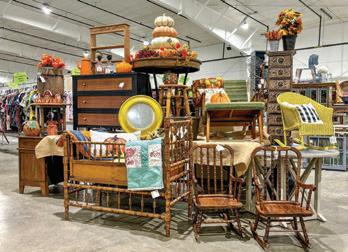
Contributed by Ryanne Ori
Does the onset of cooler weather have you craving pumpkin spice everything and a serious seasonal refresh for your wardrobe and home décor? How would you like to shop from a selection of thousands of high-quality items at 50–90% off retail prices, all while directly supporting local community members?
Consign49 is a four-day consignment sale held each spring and fall, where over 300 local community members participate by bringing new and gently used clothing, accessories, and home décor items together to form a largescale resale pop-up. Each consignor independently prices and prepares their items, which are dropped off at the event location approximately one day before the sale begins. Consign49 Team
Members then organize everything so it can be easily shopped by category and size in a retail-like setting. Once the event opens, shoppers can browse the entire venue before bringing their selections to the central checkout station. Consign49 events are a smart, sustainable way to shop, save, and earn money while extending the lifecycle of high-quality items. Consignors are motivated to clear out their homes while earning some extra cash for the holidays, and shoppers enjoy a huge selection of brand-name and seasonal items at a fraction of retail prices. Through the generosity of consignors, many unsold items at the end of the event are donated to local charities in need.
For the upcoming event, Consign49 is partnering with Alaska Adult & Teen Challenge PacWest as the primary
recipient of donated unsold items. The Consign49 Fall/Holiday 2025 Consignment Sale will be held November 13–16 at Raven Hall at the Alaska State Fairgrounds in Palmer. Admission and parking are free, all major credit cards are accepted, and dressing rooms will be provided. Event hours are 9 a.m.–8 p.m. on Thursday and Friday, 9 a.m.–6 p.m. on Saturday, and 9 a.m.–5 p.m. on Sunday. On Sunday, November 16, many remaining items will be marked halfprice, depending on whether individual consignors have chosen to include their items in the half-price sale.
If you’re interested in becoming a consignor at a future event, visit consign49.com for more info. Consignor spots are limited and available on a first-come basis.













Contributed by Kara Scott - Henry
Dig N It Kid Zone is a modern children’s attraction located in Wasilla, Alaska, created with kids’ fun and development at its heart. When I first decided to start this business, my goal was to design a space centered on both entertainment and growth for children.
The concept features indoor sandboxes, an innovative play experience that’s the first of its kind in Alaska. We’re thrilled to bring this unique opportunity to our community! Alaskan children deserve a warm, safe, and engaging place to play and learn, especially during our long winters and cool summers.

Our indoor sand play areas provide the perfect solution, allowing kids to explore, build, and create while staying comfortable indoors. We offer a variety
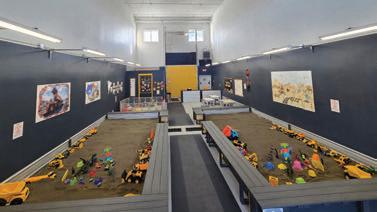
of toys and equipment, including Tonka and CAT construction vehicles, so kids can dig, haul, and imagine to their heart’s content. For the little ones, we also offer a sand-free play area designed just for babies.
Hosting birthday parties has been one of the most rewarding parts of this journey. Seeing the excitement on each child’s face reminds us why we do what we do.
Dig N It Kid Zone features two large
where children can
their creativity, develop their social, motor, and sensory skills, and most importantly, to have fun. Our mission is to provide an imaginative and safe environment where every child can play, learn, and grow. Questions? Call Kara at (907)
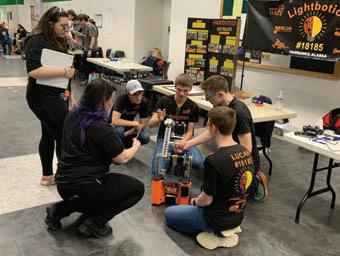



Contributed by Kaitlyn Klippert
Alaska Addiction Rehabilitation Services (AARS) is founded on the fundamental principle that each individual is entitled to the opportunity to recover.
AARS has quietly assisted Alaskans who are grappling with substance use disorder for decades. Annually, we have provided a place of stability, dignity, and recovery to hundreds of clients. In addition to treatment, we offer hope, purpose, and community. Today, we are expanding. To accomplish our goal to improve our service to our community, we need your support and help.
The Need for Our Expansion: Like many
treatment programs across the country, we have noticed an alarming rise in the demand for our services. Alaskans are searching for help. Many people in our community are struggling with their substance use disorder. Some are ready for change; to recover. AARS’ mission is to help them with their recovery. However, we have been forced to place them on our waitlist a substantial number of times. With only our limited 26 residential treatment beds, our ability to serve clients is strained.
This expansion project is our commitment to better serve our community. We are in the process of opening two new 4-plex buildings for outpatient housing, as well as a security monitor station to ensure their safety. Additionally, we have recently opened a new office building to provide additional office space for our dedicated staff and counselors. These are essential elements for the upcoming development:
a substantial expansion of our residential treatment facilities, which will nearly double our capacity from 26 to 52 beds. This will allow AARS to admit more clients into our program, rather than to turn anyone away due to a lack of space.
It’s More Than Just a Building: This is about more than just concrete and framing; it is about providing more Alaskans with a place to turn when they are ready to reclaim their lives.
Additionally, we are making investments in our clients’ recovery after they are discharged from our program. At AARS, we are of the belief that recovery includes the recreating of their lives; the rebuilding of their self-worth, purpose, and careers. This is the reason we have established robust vocational training programs in carpentry, welding, culinary arts, and, in the near future, nursing. Our clients will not only be sober, but they will also possess the necessary skills and confidence to begin anew.
These programs are not only therapeutic; they are also empowering. The structures we are adding are constructed with the assistance of our clients. The tables on which they dine are welded by clients. The meals that are served at the facility are prepared by them. In a real way, they are contributing to the building of their own futures and those of their peers.
Community-Power Healing: Community is essential for this expansion. We are proud to announce that a significant
portion of the work has been completed by our staff and clients in-house, thereby ensuring that costs are low and the impact is high. However, in order to complete our current expansion and welcome 26 additional clients who require our support and help, we need partners who are committed to our mission.
You can participate in our expansion and program by making a donation, becoming a sponsor, providing grant funding, or simply spreading the word about our program.
We invite you to join us on this journey. Tour the ranch. Please attend one of our events, such as the upcoming Fall Harvest Festival on September 27th. Ask us how you can help. Alaskans from all walks of life experience recovery, family reunification, second chances, and brighter futures as a result of your support, which extends beyond the construction of buildings.
Let’s Build It Together: Construction has already begun. Hope is already rising. Let us work to build a place that enables a greater number of individuals to recover, learn knowledge, and start anew. For additional information or to contribute, please visit: www.aarsrecovery.networkforgood.com/admin/projects/253721-growing-sobriety-expanding-hope.
Also, you can follow us on Instagram at @aarsrecovery or on Facebook at Alaska Addiction Rehabilitation Services, Inc.


Contributed
Jeremy Johansen made this trip dozens of times before. He was only about an hour from his house by way of an all-purpose vehicle, high up in the Palmer Moose Range, setting up his hunting camp ahead of opening moose season. His plan was to ‘glass’ the hillside with his binoculars in search of his winter food supply. It’s an annual ritual to set up a campsite and stake your spot for opening day; then you’re dug in and ready to get your moose. Only this year things turned out completely different. It’s a strange thing to go from riding a four-wheeler across rugged trails high up in the wilderness of the mountains, to needing help just to roll over in bed.
“I’d done this same ride so many times,” said Johansen. “From my house to moose
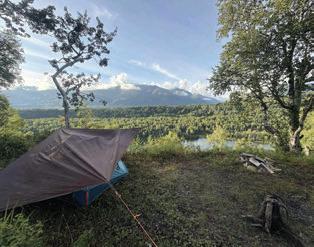
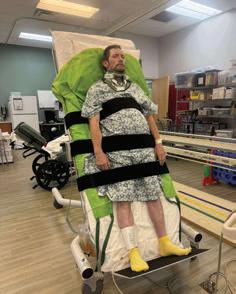
camp is only about an hour. A very familiar ride. I’d gone up there on August 22nd so I’d be ready for opening day on August 25th. The State Fair was in full swing and everyone else was down there so I literally had the mountainside to myself. Not another soul in sight for miles.
“Less than 15 minutes after I snapped a picture of my camp, I’m going about five miles an hour down a hill on the main trail, a place I’d driven over a hundred times, when a boulder came rolling down from the hillside and caught me off guard. I hit it with the knobby part of my front tire but I was able to steer out of it. Only then I hit it with my back tire and it just bucked up and booted me right off the machine. By the time I could turn around in the air and see where the wheeler was, it was coming right at me. I tried to tuck and roll out of the way and was part way through that roll when the machine body slammed me to the ground.”
Pinned under a 900-pound machine,

Johansen knew he was in serious trouble. He thought his legs were behind him but later learned, at least one was completely folded up under his body. He couldn’t feel it. At first, even the slightest movement happened only in his mind.
By sheer will, he struggled to lift his right hand enough to see his Apple watch. “I felt something move in my neck and knew I shouldn’t do this. But I also knew I didn’t have any other choice. The watch had detected my crash and was asking for me to confirm. Only when I tried to move, I felt the machine shift and was afraid that it would slide further onto me.”
For what seemed a long time, he lay there contemplating what to do next. “I realized, I didn’t really have a choice so I managed to get my watch up to my face and touched the screen with my tongue.” Instead of alerting authorities of his crash, he inadvertently hit the dismiss button.
“By this point, I figured I was going to die,” he said, clearly thankful to be alive and sharing his story. “That Apple Watch saved my life because I was eventually able to say ‘Siri, call 911’ and it worked.”
Due to his severe injuries, the watch didn’t understand what he was saying and it took several tries and sheer determination on Johansen’s part to finally reach emergency services.
The next challenge came when, rather than send a Palmer Trooper (many were at the Alaska State Fair that day) the dispatch referred the call to the Meadow Lakes station and it took more than two hours for help to finally reach the accident scene.
During the two-hour wait, Johansen talk-
ed to himself, counted, recited the alphabet and thought about his mother. “I just kept thinking about my mom and how she’d already lost one son when he was just nine years old in an accident, then my dad. I just couldn’t do this to her. I felt determined to make it out alive.”
Within minutes after a State Trooper and EMT found him, Johansen was surprised to see his friend Jordan ride up. “I’m thinking, what are you doing here dude?”
Turns out, the troopers were able to call his mother who contacted Jacob and he served as guide to point the way to where Johansen was found.
“There are so many trails and places to go in that area,” he said, “unless you really know where to look, it’s tough to find anyone out there.”
The EMT began treating him for shock and hypothermia, secured his neck with a c-spine collar, and the life-flight helicopter crew successfully transported him to emergency care. After multiple surgeries to piece his spine back together, he’s now on the road to healing.
“I know I’m really lucky to be alive. And I know it’s going to be a long, hard battle,” he admits, “but I’m determined to walk again.”
His advice to others: “When I ride snowmachines I usually wear a helmet and tech vest, but when I’m hunting I usually don’t. I wasn’t that day. I didn’t end up with any head injuries, but I easily could have. I understand, this could have turned out a lot worse, so I’d definitely recommend wearing safety protection. And even more important, tell someone where you’re going and when you think you’ll be back. I am guilty of not doing that. This day, for some reason my mom asked so I’d told her. That really helped the Troopers and my friend get them right to me in time to save my life.”
The biggest lesson after all of this for Jeremey? “Don’t take anything for granted. You might have done this same trip 100 times, but one loose rock and you could find yourself in a whole new world. Instead of climbing mountains and harvesting moose, you might need help just to sit up.”
You can follow Jeremy’s Healing Journey at www.facebook.com/jeremy.johansen.9
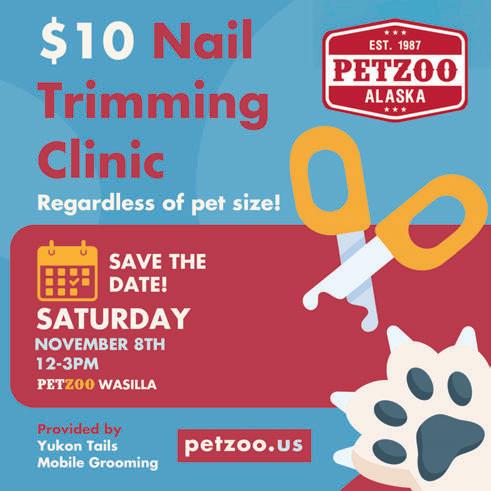












Contributed by Sierra Winter Winter is just around the corner, and that means it’s time to make sure our sleds—and our skills—are ready for the season. On Wednesday, October 22, from 6 to 8 p.m., Team CC Skidoo in Wasilla is teaming up with emPOWDERed, Artwork by Sierra Winter, and Alaska Safe Riders to host a free hands-on maintenance clinic designed especially for new riders and women in the shred community. This event brings together passionate riders, skilled instructors, and supportive partners with one goal: to empower new riders to feel confident on their machines.

Whether you’re brand new to sledding or just brushing up before the snow flies, this workshop offers a chance to learn directly from industry experts and practice the essentials every rider should know. The evening will be taught by Trever Nickerson and Scott Franz, respected names in the snowmachine community who bring technical expertise and a genuine passion for helping riders succeed. Participants will learn how to change a belt, check and adjust track and chaincase tension, and replace spark plugs, as well as understand the importance of pre-ride checks and personal rider responsibilities. This isn’t just a demonstration—attendees

will have the opportunity to get hands-on experience working with Skidoo and Lynx sleds provided by Team CC, gaining real-time feedback and building confidence before heading into the backcountry.
This clinic is also about connection and community. In the spirit of emPOWDERed’s mission, the evening will encourage riders to share experiences, ask questions, and support one another both in and out of the garage. Team CC Skidoo will provide beverages, and Bearpaw River Brewery is contributing pizza, making it a relaxed, social evening centered on learning and camaraderie.
Sled maintenance is about more than keeping machines running—it’s about
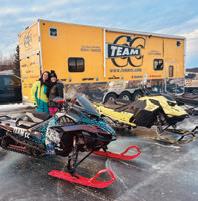
safety, self-reliance, and confidence. Riders who understand their sleds are better equipped to handle issues in the field, prevent breakdowns, and stay safe while adventuring.
The event will be held at Team CC Skidoo – Wasilla, 491 S. Willow Street, Wasilla, AK. It’s open to all new riders in the shred community and includes handson instruction, food, drinks, and plenty of shared experience.
For more information, visit artworkbysierrawinter.com/event-details/new-riderskidoo-lynx-maintenance-clinic-teamcc-wasilla.
When riders are prepared, they’re unstoppable.

Contributed by Nick McDermott
Ask a child what they want to do when they grow up, and there is a good chance that working with animals is high on their list. For those who held onto that passion into adulthood, the Veterinary Technology
(Vet Tech) Program at Mat-Su College is hosting an application orientation and open forum for prospective students. This free event is set for Thursday, October 3, 2025, from 6 pm to 7 pm, in Campus rooms FSM 204/206. It offers a unique opportunity to learn about the application process, explore state-of-the-art facilities, and engage with faculty and staff.
The Vet Tech Associate of Applied Science Degree at Mat-Su College is a two-
and-a-half-year program that combines classroom instruction with hands-on training. This orientation comes as the Vet Tech program, which launched its first cohort in Fall 2024, is now accepting applications for its exciting second round of students that will begin classes in the fall of 2026.
Co-Director of the program, Assistant Professor, and licensed Vet Tech, Rebecca Walker says, “A proactive approach to the application process will help you be more successful. If you haven’t written an essay or a résumé in a while, reach out to our campus career advisor for assistance. And meet with an academic advisor early to ensure you are academically qualified for the application.”
Event Highlights Include:
· Application Process Insights: Detailed information on program requirements and the application steps.
Contributed by Kourtney Shannon
The Mat-Su Holiday Marketplace is your one-stop holiday shopping extravaganza for Wasilla and the Mat-Su Valley. Taking place at the Menard Sports Center on November 8–9, the event offers an opportunity to shop for unique, one-of-akind gifts without making the long drive to Anchorage. More than 100 artists and craftsmen will fill the venue with mini specialty shops offering thousands of holiday gift ideas.
jewelry, furs, and original artwork to
orations, and tasty treats, shoppers will find a wide variety of Alaskan-made treasures. It’s the perfect way to get your holiday shopping done all in one warm, festive location—with plenty of easy, free parking. Admission is $5, and kids 12 and under are free. On Sunday, admission is free for military with ID or anyone who brings two canned food items for donation to a local food bank. Hours are 10 a.m.–5 p.m. Saturday and 11 a.m.–5 p.m. Sunday. Food trucks will also be on-site to keep shoppers fueled up while browsing. Don’t miss this fun-filled community event—make Santa proud and check off your holiday list at the Mat-Su Holiday Marketplace!
· Facility Tour: A chance to explore the program’s advanced facilities, including a surgery/anesthesia area, diagnostic lab, x-ray machine, and ultrasound machine.
· Meet the Team: An opportunity to interact with Dr. Montalbano, Professor Walker, and other dedicated faculty members.
· Financial Aid & Registration Assistance: Support and answers to academic, financial aid, and registration questions. The Vet Tech Program at Mat-Su College aims to address the shortage of veterinary technicians in Alaska and provide skilled workers for this high-demand industry.
If you cannot attend in person, a Zoom link will be available. You can request the link, information about the Veterinary Technology Program or the upcoming orientation by sending an email to uaa_ mscvettech@alaska.edu.

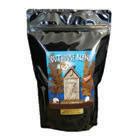
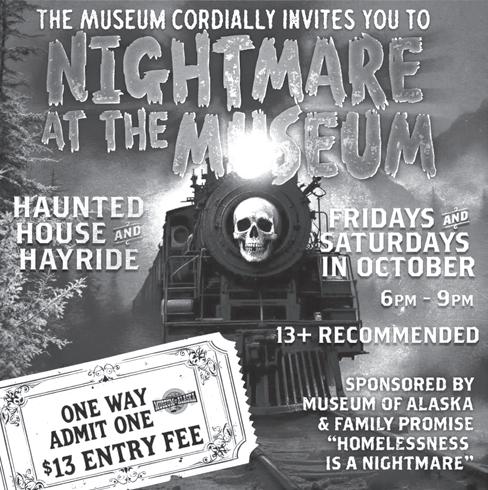










Contributed by Elaine Martin
Well, it’s that time of year again, Matsu people—termination dust is on our mountains, and that means a return to colder temperatures. While our home heating systems get a break from hard use during our short summers, they will soon



be asked to battle our long Alaskan winters again! Here are a few tips that you, as the homeowner, can do to help your boiler or forced air furnace out this coming cold season to keep the heat on.
1. Check for squirrels in your squirrel cage! No joke, we get this call often. Debris blocking your intake prevents your system from working as efficiently. Start by ensuring warm-air vents around your home aren’t blocked. Move any rugs, furniture, curtains (or squirrels) obstructing the airflow. You should also regularly clean your ducts to prevent dust buildup.
2. Change your filters! You would be surprised how much dust we have in our dry Alaskan climate, both indoors and out. The Palmer area especially gets the river silt that blows in during spring and fall winds when the riverbed is fully exposed. It is a low-cost way to keep your heating system from overworking, preventing a breakdown due to strain on the equipment.
3. Snow blocking external vents! This is a potentially deadly occurrence. When snow builds up on the outside of your home, either due to heavy, sudden snowfall or, more often, wind drift, it can block the ducts for your exhaust. The blockage causes fumes to back up into your house, causing your heater to fail and, more importantly, carbon monoxide to enter your home, which is extremely dangerous to your family. Always check to make sure your exhaust vents are clear of snow and ice buildup after a storm.

alternate for the 1968 Olympic Games, and a National Wrestling Hall of Fame inductee, Lancer Smith coached Palmer-area teams from 1973 to 2000. His widow presents the championship jackets at the award ceremony each year, and athletes proudly wear them as a badge of honor in Alaska’s wrestling community. Alaska has also made national history in wrestling, particularly in women’s competition.

4. Thermostat on the fritz? First check the power source, then the settings in your owner’s manual and, if applicable, replace the batteries. Sometimes it is a simple setting that was off due to a power outage interruption, or it got bumped by accident.
4½. Maintenance! This DIY is a ½ because one of the best things you can do as a homeowner is partner with a reputable heating company to come out and do maintenance to ensure your system is running efficiently, which saves you money on your heating bills, prolongs the life of your system, and doesn’t leave you out in the cold this winter! If you have any questions about these 4½ simple steps to keep your heating system running smoothly, contact your HVAC company to come out and inspect it. If you don’t already have a great heating company taking care of you, Mammoth Heating is here to help. We’re bringing the heat, like a Mammoth!
tournament. The Lancer Smith Memorial Tournament began in 2003 in memory of Lancer Smith, who coached Palmer High School wrestling for 18 years. A former Big Sky Conference champion for Idaho State University, an
One of the most significant matches in U.S. women’s wrestling took place in Alaska in 2006, when Michaela Hutchison of Skyview High School became the first girl in the nation to win a state championship while competing against boys. Wrestling in the 103-pound division, Michaela defeated Colony’s Aaron Boss with a 1–0 win in the final seconds, proving that women belong in the sport. Her victory brought national attention to Alaska and inspired a generation of female wrestlers.
Before Michaela, trailblazers like Melina Hutchison, also from Skyview, made history by becoming the first girl to qualify for state in 1999. The following year, Melina
and Tela O’Donnell of Homer High School both placed at the state championship. Tela went on to compete internationally, earning a spot on the first USA Olympic Women’s Wrestling Team in 2004 and placing sixth at the Athens Games. Since then, Alaska has continued to produce nationally ranked athletes. At the end of the 2024 high school wrestling season, Alaska had six nationally ranked female wrestlers: Amelia Faucett, Saoirse Cook, Grace Loutzenhiser, Jade Sherry, Jessailah Thammavongsa, and Noelle Buck.
In 2014, Alaska became the fifth state to officially sanction girls wrestling as its own high school sport. Today, the sport continues to grow at an incredible rate. During the 2024–2025 season, more than 64,000 girls wrestled across the country—a 550% increase in the decade since Alaska’s sanctioning. Wrestling remains one of the most mentally and physically demanding sports, building athletic ability, resilience, confidence, and camaraderie.
Don’t miss your chance to see the best male and female wrestlers from across Alaska battle it out at the Lancer Smith Memorial Wrestling Tournament, November 14–15 at the Curtis Menard Sports Complex. A tournament of
and
more by following Palmer Moose Wrestling
or


Contributed by Misty M. Dennis
In today’s fast-changing job market, the right skills can make all the difference. Nationally recognized, industry-respected certifications can help students, job seekers, and professionals stand out. Whether exploring a new career path, enhancing current skills, or building a stronger resume, certification programs provide the tools and training needed to succeed.
Nine Star Education and Employment Service: Alaska’s Center for Workforce Ex-
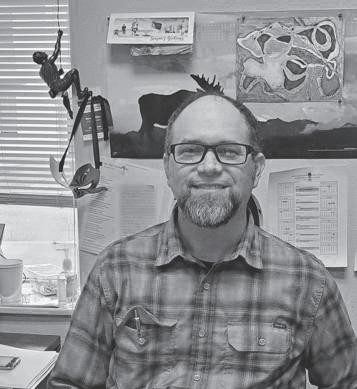
cellence is a valuable community resource offering flexible training options and a supportive learning environment to help with the next step—whether that means landing a new job, earning a promotion, or starting a business. Nine Star provides both the training and the confidence needed to move forward.
Certification offerings cover a wide range of industries and skills, including Adobe Pro, Agriscience Foundations, Bookkeeping Professional, Cisco, Communication Skills for Business, Culinary Founda-
Contributed by Janice Melvin
Chris Sturgis has been with Valley Charities for over four years, working in our finance department. Chris has been hired from within our organization to fill the position of Finance Director, vacated by Kim Byrwa. Chris has an extensive accounting background and will bring his experience to VCI. We look forward to future advancements in the finance department. Please give him a hand when he begins in October. There’s lots to learn about the many programs and facets of Valley Charities. We are excited to see Chris grow.
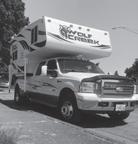
Contributed by David Hoagland
RN Career wife and Natural Resource Career husband seek to rent RV Spot (w/water, electric, & sewage hookups) for very nice dual-wheeled pickup truck with a nice-looking truck camper for several months as we look for prospective home purchase in the Palmer, Wasilla or other close small rural community. For more information and references, call Dave at (336) 280-1718 (cell). Thank you in advance for your consideration!
Contributed by Jayne Hammond
The Matanuska-Susitna Valley is a place of natural beauty; lakes, rivers, and streams have long been at the heart of our community’s way of life. As our population grows and ages, and with new senior housing being developed, it is more important than ever to ensure that all residents have equitable access to these resources.
Currently, the Mat-Su Borough does not have any dedicated ADA-accessible fishing docks or piers. Despite outreach to various agencies, including the Alaska Department of Fish and Game, the Park Service, Parks and Recreation, DNR, Connect Mat-Su, and Access Alaska, no facilities are in place that provide safe and inclusive fishing opportunities for individuals with mobility challenges. This represents a significant gap in accessibility for seniors, veterans, and residents with disabilities who wish to engage
in outdoor recreation that supports their physical and emotional well-being during the summer months.
In addition to fishing access, there is also only one ADA-compliant playground facility in our community (privately maintained and owned, beautiful park). This means that children with disabilities, or their caregivers, are potentially excluded from opportunities to play, grow, and connect with peers in safe and inclusive spaces.
Fencing at the facilities is also important; many playgrounds are not fully fenced and gated.
By creating ADA-accessible fishing areas and playgrounds, we can promote inclusion by ensuring that all residents, young and old, can fully participate in community life; expand ADA-accessible activities that foster outdoor recreation, connection, and independence; and improve overall quality of life by building spaces that reflect the values of equity, health, and belonging.
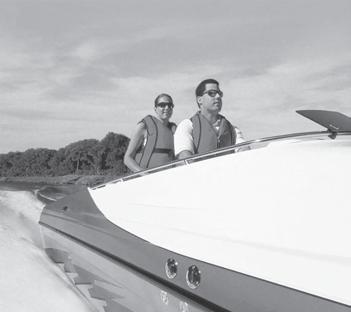
Contributed by Doris Thomas, Eagle River Flotilla, US Coast Guard Auxiliary
“Boat America,” a six-lesson course for recreational boaters, will be offered via Zoom the mornings of Nov. 15–16 by the Eagle River Flotilla, United States Coast Guard Auxiliary. The class meets from 9 a.m. to 1 p.m. on Saturday and Sunday. Students may complete the optional final exam online at
tions, Digital Literacy, Entrepreneurship & Small Business, Generative AI Foundations, IT Specialist, Medical Administrative Assistant, Microsoft Office Specialist (Word, Excel, and PowerPoint), Personal Finance, Project Management, and QuickBooks. These are credentials that employers value and skills that make a real impact in the workplace.
Both in-person and online certification classes are available through the Nine Star program. All courses are self-paced, allowing participants to learn on their own
schedule without the pressure of fixed deadlines. Knowledgeable instructors provide support along the way, creating a positive and empowering learning experience.
Building both professional expertise and personal confidence starts with training at Nine Star Education and Employment Service. To learn more, visit facebook.com/ NineStarMatSu, call (907) 373-7833, or email registercfwe@ninestar.org to take the next step in personal and professional development.

Contributed by The DUDE, Marines, Special Santa TOYS FOR TOTS
This year, the “Biker Elves” collecting toys for the Special Santa and Marines Toys for Tots Christmas drive are putting on a special with two different tattoo events. Doulos Tattoo and Black Buddha Tattoo will both be running a special called TATS FOR TOYS!
Both shops have different types of events running for the toy drive. Please call for appointments. Bring in a brand-
new toy with a receipt and get double that amount in price towards a tattoo. Do something good for your community and help make a child’s Christmas special. May Jesus bless you and yours this Christmas! Help support a good cause! Please reach out to the shops for more details: Doulos Tattoo — 1261 S Seward Meridian Pkwy H, Wasilla, AK 99654 — (907) 519-9731 Black Buddha Tattoo — 163 W Herning Ave, Wasilla,
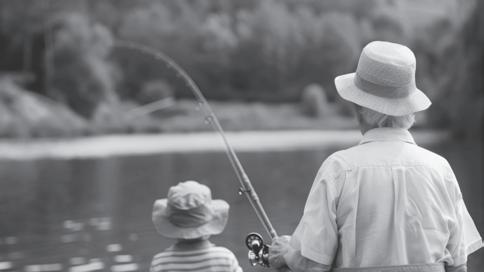
Mat-Su Parks and Trails has identified
ADA facilities as a high priority and has grant funding available to support projects like this. There are also grants available through ADA, AK DOT for sidewalk improvement, HUD block grants, and grants for businesses including a tax credit. With collaboration and investment, we have a real opportunity to transform our commu-
home after the class. Subjects covered include small boat handling, trailering, legal requirements including Alaska boating law, navigation rules, emergency procedures, and personal watercraft considerations. The cost is $25, which includes the textbook.
Course info and registration are available through Eventbrite: Boat America Tickets, Multiple Dates | Eventbrite. The Zoom link will be provided after the student registers. Early registration is encouraged so the flotilla has time to mail the textbook before class. Anyone who has questions or can’t register online may contact the flotilla at (907) 694-3570 or cgauxeagleriver@gmail.com. This course meets the requirements for safety certification in many states, and some insurance companies offer a
nity into a place where accessibility is not an afterthought.
I am committed to working with local partners and agencies to make this vision a reality, and I invite your support in creating these much-needed ADA-accessible recreational spaces for our community. I would love to be a part of planning processes, sharing ideas, and outreach.
discount to skippers who have completed the course. Flotilla 2-14, US Coast Guard Auxiliary, Eagle River wow.uscgaux.info/content. php?unit=170-02-14
U.S. Coast Guard Auxiliary in Alaska wow.uscgaux.info/content.php?unit=170
Alaska State Office of Boating Safety alaskaboatingsafety.org
U.S. C.G. Office of Boating Safety uscgboating.org
National Safe Boating Council safeboatingcouncil.org
Contributed by Tyler Healy
Raising a teenager is a challenging and exciting task for all parents. Teens are exploring new experiences, new friendships, new challenges and changing social pressures. Parents are often left with spinning heads as they navigate the changing world of their children during this time of growth and exploration.
To support families of current and future teenagers in the Mat-Su, Youth 360 is hosting a Lights On for Families event, designed to provide information and knowledge
to assist families in raising healthy, happy and supported teens. It will be held from 10 am-2 pm on Saturday, November 8th at Teeland Middle School. Featuring panel discussions, guest speakers, resource tables, and much more, the event will be an enlightening and enriching opportunity for families looking to set their youth up for success. Topics will include online safety, healthy social networks for teens, vaping, dating, bullying and much more. Families can attend for part or all of the event. This event is not just for adults. Thrive
Contributed by Living Water
Family Home
In the quiet corners of Wasilla and Palmer, there are heroes who don’t wear uniforms or medals. They are family members who give everything they have to care for someone they love. And in the Mat-Su Valley, these caregivers are finally getting the support they deserve through an emerging local program that believes one hour of rest can change everything.
Living Water Family Home, a community-based respite care initiative, is bringing heart-centered, professional support to families caring for adults and youth with disabilities, chronic illnesses, or special needs. Through Medicaid Waiver services and private-pay options, Living Water offers a bridge between burnout and breath— between doing it all and having someone trustworthy to lean on.
“Caregiving is love, but it’s also labor,” says Pristine Beers, founder of Living Water Family Home. “Too many families are running on empty, and they feel like asking for help means failing. We’re here to say—you are not failing. You deserve support.”
Living Water isn’t just offering services— they’re redefining what respite really means. Whether it’s one hour a week or daily support, the team works with families to match them with trained, compassionate caregivers who align with their needs,
values, and routines.
Respite, redefined: Respite care often evokes the image of long-term institutional care. Living Water flips that narrative. Their caregivers enter homes with one mission— to empower families by stepping in, even briefly, so they can step back and breathe.
From personal care assistance to chore support to habilitation for children and adults, Living Water operates under a trauma-informed, family-first model. This includes community and family-directed services, in-home or community-based care, day and residential habilitation, and short- and long-term respite support. Many of these services are covered under the Medicaid Waiver—a critical piece of infrastructure for Alaska’s caregiving families— though the organization also supports selfpay clients who may fall outside Medicaid coverage.
Rooted in local compassion: What makes this project even more special is its roots.
Living Water Family Home is the latest social impact initiative launched by the same heart behind White Lilac Cleaning, an award-winning local company known for its commitment to giving back.
Over the years, White Lilac has donated cleanings to cancer patients and foster families
Mat-Su will be bringing their popular youth program to the event to provide fun, supervised activities for kids age 5 and up. Middle and high school students can enjoy sports, music, art and more. There will also be a designated play area for elementary-age kids. Parents can engage in the workshops and connect with other families while their children join Thrive activities. Youth 360 provides daily afterschool youth clubs for middle and high school students around the Mat-Su. This event is held as part of the national Lights On
through its Little White Flamingos program (littlewhiteflamingos.com) and through partnerships with Cleaning for a Reason.
As the founder of White Lilac Cleaning, Pristine Beers had long been dedicated to helping families create calm, orderly homes. But over time, she began noticing a common thread: many families juggling caregiving responsibilities—for aging parents, children with special needs, or loved ones facing health challenges—were stretched incredibly thin.
“We always knew we were helping people reclaim time,” she shares. “But what we didn’t realize right away was just how much that time meant. Sometimes, a clean home was just the beginning—what families really needed was space to breathe.”
Inspired by both her professional experience and personal journey, Pristine launched Living Water Family Home with one mission—to support those who give their all, by making sure they’re not left behind in the process.
For everyone, not just someone: Unlike some care agencies that prioritize quan-

Afterschool movement, which highlights the benefits of participation in afterschool programs across the country. Afterschool programs keep kids safe, provide a critical support for working families, and support academic and social growth for young people.
Event partners include LINKS Parent Resource Center, Thrive Mat-Su, Big Brothers Big Sisters of Alaska, Mat-Su Borough School District, and more. To get involved in the event or for more information, call Youth 360 at 373-3613.
tity over quality, Living Water focuses on connection and customization. A caregiver isn’t just assigned—they’re matched. Every relationship is built on respect, consent, and mutual trust.
The name Living Water is no accident. “It’s about refreshing the soul,” Pristine says. “Just like water sustains life, respite sustains caregivers. And when we support the caregiver, we strengthen the entire family.”
Living Water Family Home is currently accepting new clients in the Mat-Su Valley, including Wasilla and Palmer. Services are open to both Medicaid Waiver recipients and private-pay families. The first consultation is always free.
Because one hour might not fix everything—but it might just save someone. More info at livingwaterfamilyhome. com or call (907) 373-9817; Instagram @livingwaterfamilyhomealaska, Facebook @ Living Water Family Home, Podcast: Living Water Conversation on YouTube (@LivingWaterFamilyHomeAlaska) and Spotify.
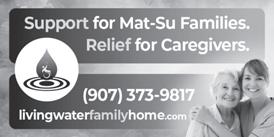

Contributed by Ken Hagler
We all have our favorite breakfast recipes, but if you’re looking for a great breakfast—or anytime—casserole, this one is a winner. You can mix in hash
browns or add spinach for a metabolic health boost. It’s perfect for camping in a Dutch oven or baking at home in a deep skillet.
Ingredients include 1 pound of chopped bacon strips, 8 large eggs, ½ cup of halfand-half cream, and 2 cups of shredded cheddar-Monterey Jack cheese. Optional additions include one 20-ounce package of refrigerated O’Brien hash brown potatoes, jalapeño slices, 5 ounces of frozen chopped spinach, and ½ to 1 teaspoon of hot pepper sauce.
Contributed by Trina Bergo Student at Nine Star Adult
Education
and Employment Services
Have you ever wondered how your experiences in life have impacted you? I have had many experiences in my twenty-seven years of life; some, I believe, are worth sharing with others. I like to think of my experiences as a series of trials. In this essay, I will be sharing some of my own hardships, miracles, and even some advice that could be helpful.
A lot of my struggles were self-induced and are more than likely relatable to others. As an adolescent, my parents got a divorce. My life at home became unstable. I was rebellious and (in my own way of acting out) I was skipping a lot of school. I
In a 10-inch Dutch oven or deep skillet, cook the bacon until crisp, stirring occasionally. Remove with a slotted spoon and drain on paper towels, reserving 2 tablespoons of drippings in the pan. If desired, press the hash browns onto the bottom and slightly up the sides of the pan to form a crust. In a small bowl, whisk the eggs and cream together, then stir in any optional ingredients such as jalapeños, spinach, or hot sauce. Pour the mixture over the potatoes, then top with the cooked bacon and cheese.
Bake at 375°F for 20–25 minutes, or until the eggs are fully set and the cheese is melted. If needed, bake for an additional 5 minutes—and enjoy! Ken is a Realtor with RMG Real Estate, and together with his wife, Dr. G, they are helping Alaska get healthy through their metabolic health company, Healthy Together and Feeling Great! For more information, call (907) 306-7230 or email alaskahealthy@gmail.com.
wasn’t taking my education seriously at all. Of course, this did come with consequences. My grades dropped. I found that on the days I did attend, I felt completely lost in the curriculum. I struggled throughout middle school, and I played a lot of catchup in high school. Despite my struggles in my childhood, there were still miracles that happened too.
Miracles that have taken place in my life have changed who I am for the better, and I also believe they saved me. When I was twenty-five years old, I found out I was pregnant. I was in complete shock. My world felt as if it was turned upside down. Everything changed. My goals and my focus completely shifted, and it happened quickly. My first ultrasound revealed that not only was I pregnant, I was expecting
multiples! I had so many different emotions. Motherhood has been a miracle in my life in a lot of ways. I’m not the same woman I used to be, and I’ve grown as a person so much. It has brought me stability and given me tremendous purpose. I do believe my sons are my greatest blessings, and they are miracles in my life. They give me a reason to keep going no matter what. I do have some good advice from my experiences that I’ve had along the way.
Throughout my hardships and miracles, the best advice that I can give is this: if you are struggling with anything in life, do not give up. I will also say to take school seriously. Education is important for your future. It’s never too late to get an education. My advice for anyone who has children or is going to have children is that although
it may be scary, it is absolutely worth it. Having kids can be such a challenge. Taking care of another human being is a lot of responsibility, but it can be so rewarding. Do what works for you, find a rhythm, and maybe even establish a routine. Prioritize time for yourself. I will also say that it will come naturally, but do not be afraid to ask for help if you need it.
Through my journey in life, I’ve hit many bumps in the road, and there were a lot of learning curves for me. I have struggled, I’ve experienced miracles, and I’ve learned many lessons as well. I hope that in sharing my own experiences, it could help someone who is currently struggling. I hope that you realize that we’re all human, and that you are not alone.
Visit ninestar.org for more info.

than a simple chore; it’s a vital investment in your home’s longevity and your family’s comfort and safety. Taking proactive steps now can prevent costly damage, reduce energy bills, and ensure a warm and worry-free season. Starting outside your home, it’s important to turn off the water supply to all exterior faucets from inside the house and disconnect and drain
frames to ensure there is a good seal. Fix and patch as needed, and remember, a door sweep or draft guard at the bottom of exterior doors can make a noticeable difference. Now that the heat will stay where we want it, it’s time to fire it up (figuratively). Your heating, plumbing, and safety systems require special attention before winter sets in. Schedule an annual inspection and tune-up with a qualified HVAC professional to ensure your furnace or boiler is operating safely and efficiently. Chad shares, “A simple professional inspection won’t run you very much money but can save you time and expense, possibly preventing the heat from going out when it’s 50 degrees below freezing.” This is also a good time to replace your furnace filter, as a clean filter will improve air quality and reduce your heating system’s workload.
The days of the celebrated and heroic Maytag repairman may be relegated to the nostalgia centers of our brains, but the time and effort these professionals put in to protect us from the elements make them unrecognized lifesavers every day. The Refrigeration and Heating program at Mat-Su College is a proven training ground for those interested in this vital and in-demand set of skills. The program can be completed in two semesters, and graduates have many career opportunities, can specialize in specific areas, and often graduate with a job in hand. With the onset of winter being unavoidable, why not learn how to minimize any negative impact from the cold while supporting yourself and your family? For more info on this and all the programs available at Mat-Su College, visit mat.su.alaska.edu.

in Liberty
Liberalism is not extended by progressivism, nor is it completed by Marxist theory. These ideologies wear the language of liberalism like a borrowed cloak, but they are not its inheritors. My writing divides the camp: between those steered by Marxist thought, and those who remain liberals at heart.
Many self-identified liberals live with some cognitive dissonance. They know something is wrong but are reluctant to name it. They accept ignorance because it is easier than confrontation. They go along with “progressive” leadership, not from conviction, but from fear - fear of ridicule, fear of being called names. They console themselves with history, reminding themselves that liberalism has always been the fountainhead of individual liberty, and assuming that what now calls itself liberalism must still be the same. It is not.
This is why my writing is somewhat subversive. It tries to disrupt that dissonance. It reveals the mission drift. I do not seek to upset self-proclaimed progressives, but the upset comes naturally, because I tear away a mask they cannot afford to lose. They often know that they are not liberal, yet they must call themselves liberal to claim the legitimacy of its legacy. My writing points out that disguise.
But for those with a clear conscience, it offers clarity. I have heard it again and again: readers thanking me for articulating what they felt but could not put into words. For them, my work is not an attack but a relief. It tells them they are not wrong. It assures them that liberalism and so-called progressivism are not the same, and that to reclaim liberalism is to reclaim honesty.
There are two kinds of subversion. One is manipulative-deceptive, coercive, hidden. The other is honest-disruptive through clarity, unmasking what is obscured. My work attempts the second.
I write carefully. I write considerately. I write to illuminate the truths that lie hidden in plain sight, obscured by slogans and false progress.
This is my method: to divide by honesty, to subvert by clarity, and to restore to liberalism the dignity of its name.
I write for the liberal reader with a subversive aim: to show that progressivism and Marxism are not the heirs of liberalism but its undoing. My method is not manipulation but claritydisrupting cognitive dissonance by exposing mission drift. I trust that those with a clear conscience will recognize the truth, and I accept that those who depend on conflation will resist it. To write honestly, even when it divides, is the most subversive act of all.
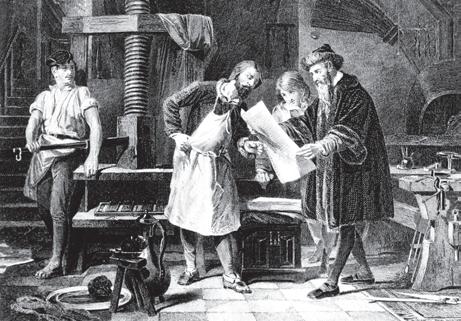

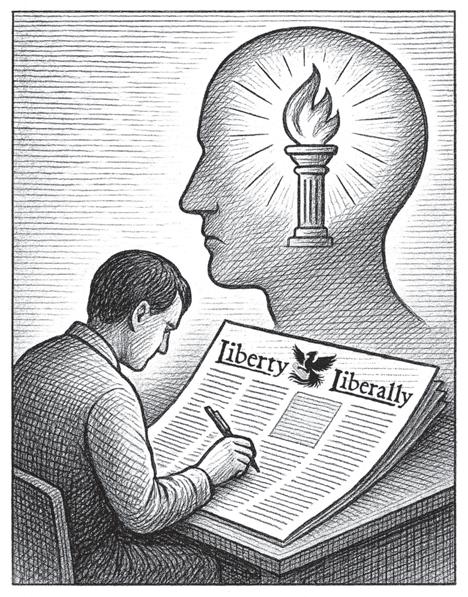
For years, I have been misunderstood as a writer: people do not understand that I am an essayist. Again and again, I am called a journalist. People read my words in the newspaper, they see the format, they recognize the medium, and they assume I am playing the familiar role. My well-written post on Facebook seems somehow professional, and they think that implies journalistic intent. Some even go so far as to tell me that I am their favorite journalist. Others, with equal confidence, have told me I am a terrible journalist. In both cases, they are wrong. I am not a journalist at all.
An essayist is not concerned with recording what happened or who said what. An essayist is concerned with something deeper: the meaning beneath events, the principles behind actions, the philosophy that guides our lives. A journalist gives the facts of the matter; an essayist gives a way of thinking.
That phrase-a way of thinking - cuts two ways for me. I do not merely offer readers a way of thinking; writing itself is my way of thinking. My essays are not composed after my thoughts are finished. They are the process by which my thoughts are formed. The words on the page are not a record of conclusions, but a journey toward them. And when people read what I write, whether they recognize it or not, they are walking beside me in that process.
Still, the misunderstanding can be disheartening. Being called a bad journalist stings, not because I ever claimed to be one, but because it misjudges the craft I actually practice. Being called a great journalist stings in its own way, because the compliment, too, misses the mark. But over time, I’ve learned to take both the insults and the compliments with a grain of salt. Because what matters most
is not what they call me-it’s that they are engaging with the ideas.
Ironically, the very medium of the confusion has become the reason people read my work at all. If I handed someone a book of philosophical essays, most would never open it. Philosophy, as a genre, carries a reputation for being distant, academic, even elitist. But when those same reflections appear in newsprint - under the masthead of a community paper-they slip easily into people’s hands and homes. What might otherwise feel intimidating suddenly feels ordinary, even approachable.
This was never my strategy. I did not sit down years ago and devise a plan to disguise philosophy as journalism. I chose newsprint for a much simpler reason: it was the most affordable way to enter media. The irony is that this practical decision has carried an unexpected benefit. Because the essays come dressed in the form of journalism, readers meet them without resistance. They believe they are following a journalist, when in truth, they are keeping company with an essayist. And in that company, something more important happens. They don’t simply absorb information; they step into a way of thinking - my way of thinking. That is the essayist’s true aim: not to report, not even to persuade, but to invite reflection.
So yes, the confusion cuts both ways. On one side, it obscures my craft, leaving it unseen. On the other, it amplifies the reach of the very ideas I seek to share. And if it takes being called both the worst and the best journalist in town for my essays to find their way into people’s minds, then I can live with that. At the end of the day, writing is my way of thinking - and reading, perhaps, becomes yours.
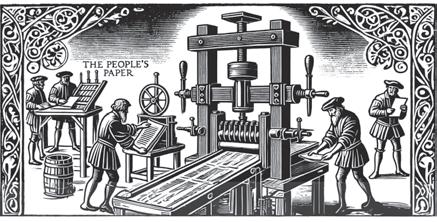
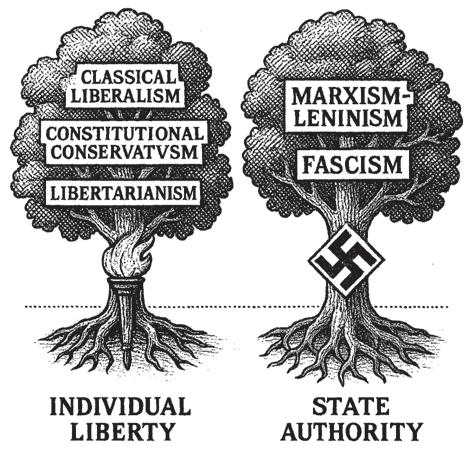
We are taught to imagine politics as a spectrum, stretching from left to right. But this model conceals more than it reveals. The true divide is not horizontal but vertical: liberty above, authority below.
There are, in truth, two family trees of philosophy.
The first is the tree of liberty. Its roots are classical liberalism - the recognition that the individual is endowed with rights not granted by the state but inherent to their very being. From this root of liberalism, branches spread outward: constitutional conservatism, libertarianism, and liberal democracy. These branches may quarrel among themselves, but all are rooted in the same soil: the dignity of the individual, the restraint of government, and the defense of dissent.
The second is the tree of totalitarianism. Its roots are collectivist and coercive. From it grows Marxist totalitarianism on one side and fascist nationalism on the other. At first glance, they seem opposed - class against race, hammer against swastika. Yet they are rival tribes within the same family, bound by a common contempt for individual liberty and a common exaltation of state power.
This is the map that matters. Not left against right, but liberty against tyranny. To confuse the two is to weaken our defense of freedom itself.
And yet, the confusion is everywhere. We are told that “right-wing violence” is the greater threat. The statistics bear this out - but only because the classification system counts neo-Nazis and white supremacists as “right-wing.” By this trick, their crimes are tallied against conservatism itself, as if defenders of
constitutional order were in league with those who would destroy it.
But among conservatives, neo-Nazis are not embraced. They are refuted and rejected. Their philosophy of racial collectivism and state worship is as alien to constitutional conservatism as Marxism is to classical liberalism. Yet in the neat tables of researchers and the headlines of journalists, they are grouped together - and so the public inherits the falsehood that conservatism is a step towards fascism.
Meanwhile, across the aisle, progressivism has absorbed Marxist ideas, and clothed itself in classic, liberal language. Critical theory, collectivist redistribution, and speech control have been welcomed into the mainstream of so-called liberal politics. Unlike conservatives, who openly reject neo-Nazis, modern liberals have allowed their house to be redefined by doctrines rooted in totalitarian soil, thinking falsely that they are just the next branch of liberalism.
The asymmetry is glaring. Conservatives guard their boundaries; liberals yield theirs. But the public is left with a crooked vocabulary in which conservatives are smeared as extremists, and progressives are crowned as the heirs of liberty.
This is not merely semantic. It shapes the way violence is counted, the way ideologies are judged, and the way power is distributed. It is sophistry disguised as scholarship, and it erodes the public’s ability to distinguish friend from foe, liberty from tyranny.
We must resist this linguistic sabotage. Words must reflect reality, not distort it. For unless we recover our language, we will lose the very means of defending the freedom that language was meant to preserve. Totalitarianism, both Marxism and Fascism, are completely opposed to and opposite of Liberalism, both conservatism and those who are liberal.
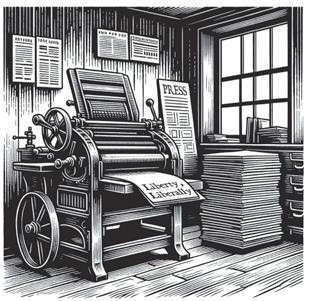
ABOUT: “Joshua Fryfogle, the owner of The People’s Paper, Make A Scene Magazine, and Liberty, Liberally, is heavily involved in the local community. In addition to creating a monthly paper that prints what community members submit, he also owns 95.5 The Pass, KNLT, one of the only stations in the nation to play local music in regular rotation! Josh is a lifelong singer/songwriter, and serves as booking agent and sound engineer for countless other Alaskan musicians.”
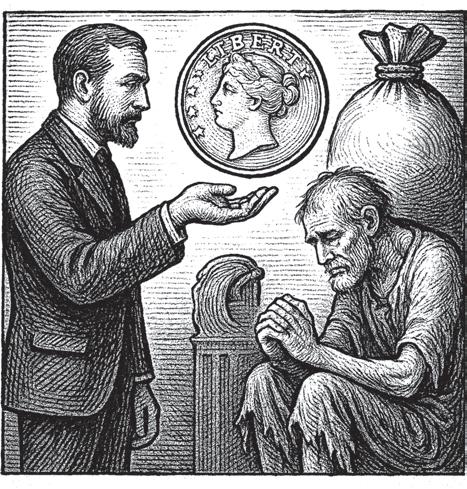
By Joshua Fryfogle
July 22, 2023
Compassion can’t be legislated
Love cannot be forced
Charity cannot be taken
Taxed without recourse
Liberty cannot be given
Conscience not coerced
We are free to disagree
And side with the obverse
Of this realm we have a coin
A stamp to make our mark:
Our individuality
Free will is all we are
The author can authenticate
A counterfeit cannot-help but to disintegrate
Over time, we’re taught
To be true to one’s self
Is like a precious metal
Over time the weight of wealth
Will surely test our mettle
But the thief that steals away
From those who have created
All the wealth that they have wrought
His greed is never sated
What is taken from a soul
Is never what it seems
Materialists can only steal
All that they can see
Compassion wells up in the heart
Liberty to love
To share much more than what you own
The thief would not think of
To love one’s neighbor as one’s self Is to love what is real
To choose to share our worldly wealth
Springs up from this ideal

Contributed by Sammy Taylor
Some of my Dena’ina friends refer to their for-profit ANCSA corporation as “the communists.” They mean that the corporation is greedy, focusing only on money making rather than on the well-being of their individual members. Sure, the shareholders get a dividend check, but can that make up for their lack of non-toxic drinking water? Yeah, there’s money to be made extracting resources but if it removes our best Berry patches, is it worth it? Yes, the road allows trucks to haul out profitable minerals but if it covers our Labrador Tea and other subsistence foods and natu-
Contributed by Kassandra Rees Leaders. Who should you follow? What makes one leader more worthy than another? How can you tell if they are genuine or false? Why should you follow them? Most human beings look to leaders to help them address common longings, needs and values: belonging and identity, certainty and control, meaning and purpose, justice and fairness, transcendence and hope. Different leaders address those needs in different ways.
“False prophets” generally have a religious connotation, but the term applies to any leader who predicts the future and guides followers in an unhealthy direction. Religions warn against following them. Christianity (Deuteronomy 13, 18) warns: a prophet may perform signs but still be false if they lead people away from justice, covenant, or truth. Jesus (Matthew 7: 13-16) warns: “Beware of false prophets, who come to you in sheep’s clothing but inwardly are ravenous wolves. By their fruits you will recognize them.”
Buddhism warns: a false teacher is one who feeds ego, attachment, or craving instead of reducing suffering. Philosophically, Plato’s Cave warns that a false prophet is like a sophist—persuasive but concerned with shadows, not truth, keeping people
ral medicines with grime and soot and makes walking on the road hazardous and pollutes our streams, should we have it? Of course, those quarterly checks are useful, but do they mean anything if the Moose and Birds are gone so that we have to use all that money to buy lower 48 meat at the store?
A for-profit Alaska Native corporation has control over land that many of the corporation’s officers may not have seen since childhood, if at all. Just like any corporation, the officers may have little idea what it takes to live and hopefully thrive in one’s home where the money is often made.
We find that situation everywhere. We live where others have control over our lives. All of us live as members of a com-
chained to illusion. Nietzsche: False prophets exploit resentment—turning people’s fear and bitterness into movements that look strong but are hollow. Popper’s Paradox: False prophets often claim tolerance for themselves while seeking to eliminate it for others. The shared warning label: do not follow leaders who tempt you into helping them create a harmful future.
False prophets are bad leaders who lead their followers into darkness. They use lies, illusions and contempt to twist and redirect their followers’ needs and longings in unhealthy ways. Complex realities are reduced to black-and-white slogans. They offer a false cause of problems (It’s Their Fault!). Real grievances (such as economic pain or cultural anxiety) are mixed with distortions and half-truths to make the poison go down easier. Chaos and fear work quickly – fear unites people in an instant, against some “enemy.” Conflict is more exciting than peace: it gives the illusion of purpose and drama, “us vs. them.” Hatred is easier than justice: hatred just blames others while justice asks us to examine ourselves. People are lured away from the truth, and the hard work of actually finding solutions to complex realities, with easier, quicker counterfeit versions: compassion turns into mockery and disdain, empathy becomes favoritism (we care for only our group), justice becomes vengeance (make
Contributed by Nancy Racek
With very few exceptions, no one deserves to be shot to death, or shot at all for that matter. Not Charlie Kirk. Not Melissa Hortman or husband Mark. Not the hundreds of children killed in school shootings. Not people attending church, going to grocery stores, attending concerts. Not immigrants. Not the black man pulled over for a traffic violation. No one.
Charlie said, “It’s worth to have a cost of, unfortunately, some gun deaths every single year so we can have the Second Amendment to protect our other god-given rights.” I doubt when he said that he imagined he would be one of those deaths. But he was.
I wasn’t a fan of Kirk’s ideology or rhetoric. I thought it divisive and dangerous. A local businesswoman who also wasn’t a fan
Contributed by Emmet Penn
It has been just over a month since Charlie Kirk was killed, and it is time for reflection. He was a symbol that will influence what we do as we move forward. For some he was a threat to the country, for others a bastion of hope for America, and still others saw him as just one more in the crowd of conservatives online. You can go through his biography and figure out who he was, but now we must answer the question who is he now and what does he represent?
“[Charlie Kirk] kind of, essentially, is assassinated for his ideas, for challenging people” said Dr. Samuel Richards of SOC 119 in a livestream he had the day after Charlie Kirk’s death. He said that when Charlie Kirk came to Penn State he would
encourage his students to go debate him, knowing that they were most likely going to lose, because Charlie Kirk was so much better at debate than they were, but that was the point, the facing off of ideas is the point of a university, debate makes you reconsider, reevaluate, and reinforce your position based upon the holes that were poked in it by the debate. “The killing of Charlie Kirk is terrorism. . . but I want to hear your thoughts. . . what happens next?” 9/11 forced the country together, but this killing resulted in many taking the internet to celebrate or justify it, dividing the country, making those who agreed with some of Charlie Kirk’s ideas feel like they could just as well be next if they spoke up.
“I realized that there are some things that are broken that I don’t see how
munity with rules often set by those who don’t live among us.
Every society and community faces this dilemma. How can we ensure that those who make decisions for us are really accountable to us. Does every decision mean picking one choice and forgetting all the other options?
What is a person to do? How can we make the most of our limited individual power? For corporation shareholders, one option is to elect new officers who haven’t forgotten their roots and the needs of their community. As ordinary citizens, that’s one of our options, too. We can choose people to represent us who will make decisions that protect us all.
That’s why I’m so thankful for our
them pay), peace becomes enforced silence (shut down opposing opinions so the lies become accepted). Poisonous lies produce poisonous results – real harm, division, and chaos, ending in collapse over time.
Bad leaders are in it for themselves: intoxicating, addictive power, wealth, or security, self-deception (believing they are above ordinary accountability), or social and political influence as shapers of morality, identity or belonging. Their work is never done – more lies, manipulation, and fear are required to maintain illusions and control. Followers lose – turned away from virtue, truth, and goodness they are swept along with confusion and chaos, while pain is manifested in many ways in individuals, groups and throughout society.
Genuinely good leaders seek wisdom and truth for themselves and others.
TRUTH in this context isn’t about facts – it’s about upholding enduring universal moral laws and principles that sustain life, dignity, and flourishing across time and cultures – an enduring moral reality worth holding onto. Good leaders seek long-term goals of the greater good for society, development of a strong moral character, justice, and peace through right relationships with each other by working toward a sense of shared humanity. Religious traditions point to these as the “fruits” of good leadership.
had the audacity to exercise her right under the First Amendment (that’s the one just before the Second Amendment) to speak out against Charlie—not celebrate his death nor grieve, but express her feelings. Her exercising that right, one Charlie was for, by the way, prompted a rash of death threats and venomous outbursts. I understand that something is broken inside those who strive to terrorize others in this manner. But how do we as individuals, communities, and a nation benefit? What’s to be
they can be repaired at this point, we’ve reached over the line, in ways that are beyond the Pale. . . with the celebration of assassination” said Jonathan Pageau in his video about the Charlie Kirk assassination, and he went on to discuss the recent events of killing a CEO being celebrated, threats against the President’s life being normalized (even in upper echelons), and this assassination. “it is not that disturbing, because the notion that violence is not a part of politics is a very recent thing, and it’s a great thing. . . but the revolutionary thinkers, revolution means to cut the king’s head off. . . the left thinks that violence is legitimate if it goes against authority, and it is there to remove authority in order to free us” but this has now been implemented against someone who was partaking in debate, a form of violence that is necessary to allow freedom and peace and reason to flourish. If there is no dialogue of ideas
Contributed by Alexander Harmon
For more than a century, Americans have been conditioned to accept the dollar as if it were as good as gold. Yet the truth, plain for any honest observer, is that the U.S. dollar has lost over 95% of its purchasing power since the Federal Reserve was created in 1913. Inflation is not some natural force of economics. It is the deliberate policy of government and central banks to spend beyond their means, hide the cost in debased currency, and make the people bear the burden.
We have been robbed—quietly, steadily, and without consent. The value of our savings and wages has been siphoned away.
This theft by inflation is the most insidious tax of all, because it requires no law, no debate, no recorded vote. It happens while you work, while you sleep, while you trust. Today the danger has grown greater. Washington is not preparing to return to soundness but to double down with new schemes. Central bank digital currencies are being sold as “modernization.” In reality, they are the perfect instrument of financial surveillance and control. If allowed, a digital dollar will mean every transaction you make is monitored, categorized, and—if deemed undesirable—blocked. That is not liberty. That is monetary servitude to the state. There is a way out. It is the same remedy
Alaskan voting system! There may be only two major political parties, but with rank choice voting we can select four of our favorite candidates and grade them from most desirable, to second choice and even a third and fourth choice. We can really look into each candidate’s credentials and background to select the ones with the traits we want. Of course, one person may not have all the things we’re looking for in a candidate. So, with rank choice voting we can hedge our bets and have more options. Rank choice is the way to make the most of our voting rights. It is our right and responsibility to help choose our representatives for rule making. Thank goodness Alaska’s voting system allows us to choose smartly.
Philosophers speak to our duty to uphold these universal values or universal moral laws because EVERYONE longs for them.
Measure false prophets by their words and actions: fearmongering, scapegoating, encouraging closed systems through discouraging hard questions, isolating followers from other voices, self-glorification, offering empty promises of instant salvation, wealth, or power in exchange for loyalty, and sowing division and contempt, setting people against one another instead of working together toward reconciling real problems. What fruits result from stoking fear, hatred, contempt or other negative emotional pushes and pulls?
Measure good leaders by their words and actions. Good leaders address the same longings and needs but have different responses: seek to build communities grounded in love, shared purpose, mutual respect, work in and share our faith in process and reason, work for systems that uphold dignity and equity, and connect with the sacred – awe, beauty, imagination. Compassion, justice, and peace require hard work, patience, humility, shared sacrifice, and openness to others, and require time and effort to bear fruit. What fruits result from serving others, creating, learning, building a better world?
Measure with your head, heart and spirit – then choose your leader carefully.
gained by creating an atmosphere of fear? What’s to be gained by instilling fear so profound a business owner feels she has to have a man present during business hours and while closing because she doesn’t feel safe being there by herself? Tell me, what? I keep thinking we’re better than this. But we’re not really, are we? Just the other day I heard one of the neighbor’s kids, a preteen, refer to someone using hateful slurs. Wasn’t expecting to hear that. A defining moment.
then there is either no freedom because of tyranny, no peace because of war, or no reason because of isolation.
This is what Charlie Kirk represented, a voice of challenge that was silenced by gun smoke. What comes next for us will largely be determined by what happens in the Lower 48, as we are tied to them in some sense. But they are the ones killing each other, burning their own cities, and celebrating the deaths of their fellow Americans because of political disagreement. So, what can we do? We can continue the discussion of ideas, people in Alaska do not all agree on things, but if we turn to isolation, as we are oft to do, then what will become of us is not good. Freedom is gained through dialogue, and we all want to be free, so let us encourage and continue the dialogue that Charlie Kirk died pursuing.
our Founders knew and our Constitution prescribes: sound money. Gold and silver are not relics of the past—they are anchors of freedom. They cannot be printed by politicians or manipulated by central banks. They are honest, enduring, and time-tested. Americans must take matters into their own hands. Purchase and use goldbacks for transactions, and withdraw your trust from a system designed to fail you. Hold real money. Acquire gold and silver. Support practical alternatives like Goldbacks that allow for daily, lawful transactions in precious metals. Show by your choices that you will not participate in a monetary system that rewards reckless spending and punishes thrift.
This is not a fringe idea. Central banks across the globe are buying record amounts of gold. Nations are preparing for a post-dollar world. Ordinary Americans must do the same—not out of fear, but out of responsibility to themselves, their families, and the principles of liberty. We do not need new forms of centralized money. We need the restoration of sound money, free markets, and limited government. Inflation and digital currencies are tools of control. Gold and silver are tools of independence.
The time to act is now. Peacefully, lawfully, and firmly, let us declare that we will no longer be robbed by paper promises. Let us demand an honest currency, and let us live as free people who choose value over deceit.

Contributed by Robert M. Sawin III
Alaska’s landlord–tenant laws were designed to protect renters by ensuring safe housing, preventing abuse, and promoting fairness. Yet in practice, the system breeds resentment on both sides. Landlords face costly, drawn-out litigation and the burden of chasing unpaid rent, while tenants live under fear that small disputes could spiral into eviction and home-lessness. The state absorbs the fallout—overloaded courts, rising homelessness costs, and a wary housing market.
This cycle erodes dignity for all. A better approach would weave accountability, empathy, and efficiency into a restorative justice model, with the state acting as a neutral payment ar-biter—much like it does for utilities—ensuring seamless transactions and lifting enforce-ment burdens from private parties.
The Contradiction in Current Law
The core problem lies in how possession is defined. A retailer can stop a shoplifter midaisle—no payment, no goods. Housing is the opposite: once a lease is signed and keys handed over, tenants hold legal possession even if they stop paying. Landlords can’t re-claim their property quickly; instead, they face months of costly court battles that often ex-ceed the unpaid rent. Meanwhile, utilities like water or electricity can be cut off immediately for
nonpayment. Yet landlords, who provide shelter and often bundled essentials, must shoulder losses until the courts intervene. This undermines housing as a sustainable enterprise, driving owners from the market and fueling tense, resentful standoffs over payment.
A Proposed Solution: The Housing Justice Authority: Alaska could create a Housing Justice Authority, funded by a small rent surcharge (1– 2%). Participation would be voluntary at lease signing, signaling commitment to a faster, dignity-focused process outside the courts—while those who opt out remain under the current system.
The Authority would mediate disputes through swift arbitration, resolving issues in weeks rather than months. It would secure rent continuity for landlords during tenant hardships while offering a backstop for renters facing genuine crises such as health emergencies or sudden unemployment. At the same time, it would monitor patterns of non-compliance, flagging repeat issues for either side without resorting to immediate, harsh reprisals. Its fo-cus would remain on promoting accountability through restorative measures, prioritizing repair over retribution.
Rulings would have state enforcement, but the guiding ethos is balance: helping all parties thrive. Participation is voluntary
yet requires good-faith history—steady rental compliance or responsible property management—to limit government risk and build trust in the sys-tem.
An Insurance Model for Housing: Government as Payment Arbiter
Think of it as collective housing insurance, with the state as the rent conduit— similar to how Alaskans pay utilities or SNAP. Tenants pay the Housing Justice Authority on schedule, and landlords receive guaranteed disbursements, ending collection hassles and conflict. Enforcement shifts to the state, which addresses nonpayment through outreach, pooled fund coverage for short-term crises, and graduated steps like reminders or payment plans—never heavy-handed tactics. Landlords gain steady cash flow and can focus on upkeep, while tenants gain security and neutral dispute resolution. The state assumes limited, measured risk for vetted partici-pants, with transparent tracking to prevent abuse. Participation remains voluntary, reward-ing good faith: predictable income for landlords, stability for tenants, and cooling-o periods for repeat violations to preserve the system’s integrity.
Restorative Justice, Not Retribution
At its core, this model acknowledges that most landlords seek stability, not eviction battles, and most tenants seek fairness, not exploitation—yet current laws cast them as adver-saries. Restorative justice reframes that dynamic as a cove -
Contributed
by
Doug Ferguson
As we see the chaos and violence escalating in our major cities and around the world today with its danger of triggering a nuclear WWIII, much of our population gets mislead about what’s really going on because of the majority of the media’s labeling of all the various factions involved and what we think these labels really mean. Also, adding to this confusion, we are seeing a lack of voter participation in our local elections. Less than 6% of our eligible voters just voted for mayor in our recent Palmer election.
The terms “conservative”, “liberal”, “progressive”, “fascist”, “right-wing”, “left-wing”, “socialist” and “communist” are all thrown around without understanding what the groups being labeled really believe and what their objectives are in the current social environment in which the human race finds itself today.
A good example is the term “conservative”. Webster defines the noun form with
three possible meanings:
A- an adherent or advocate of conservatism and especially political conservatism
B- a member or supporter of a Conservative political party
C- a person who adheres to traditional methods or views
The media typically characterizes the majority of Americans who don’t like the economic and social chaos we see going on in our country as the “B” option, i.e. “a member or supporter of a Conservative political party.” Often the term “right wing” is also often applied.
In reality today this group is really a cross-section of average Americans who don’t like what is happening in our country and wish to see it brought back to our more traditional way of doing things, i.e. Webster’s C – definition: “persons who adheres to traditional method or views”.
As a result, many well-meaning citizens end up siding with the very factions that wish to destroy what we call “Western Civ-
Contributed by Glen M Biegel, Former Talk-Show Host, Conservative Writer
I am proud to endorse my friend, trusted leader, fellow conservative, and brilliant legislative strategist, Shelley Hughes, for Governor of Alaska.
As a policy enthusiast, I spend countless hours researching and discussing ideas within conservative circles. When I need insight into the benefits or challenges of a policy, I often turn to Shelley. I recently shared a Permanent Fund Dividend (PFD) proposal with her. When we discussed it, she immediately identified a solution to a constitutional concern that had stumped others for years. Shelley listened intently and, with her deep experience, she refined my idea to limit the PFD-hungry legislature’s power. This kind of quick, insightful problem-solving is rare and remarkable.
We went through the COVID-19 pandemic together, and she listened to my Pandemic Bill of Rights. Over the years, Shelley and I worked together on many key issues. Shelley is a leader among her legislative colleagues, as evidenced by her
advocating for school choice, protecting life, addressing crime, supporting fathers’ rights, and working to secure our voting process. Reflecting on my years in radio and public life, I see Shelley as a consistent, thoughtful, and principled fighter for the causes I hold dear.
Recently, after hearing five of the top candidates give their three-minute ‘kitchen-table’ speeches, I counseled Shelley. I discussed two areas of concern with her regarding the other candidates, as well as my strategic view of the two parties in Alaska. The two concerns I offered were that the other candidates have areas of strength, but they are limited in their vision, and while they have some ideas, they have a minimal record. The overarching concern is that I don’t think they learned the essential lesson from Governor Dunleavy’s Administration and the brutally partisan legislature.
Failures of Republicans in Alaska and nationwide have provided a valuable lesson. Despite strong qualifications, all good and well-intended Republicans face tough challenges from the opposition once sworn
Contributed by Tyler Ray
For over a decade we have been faced with the progression of the LGBTQ ideology. It started with talks of legalizing gay marriage, and we spoke up, saying it was a slippery slope. We were demonized and called bigots for saying demonstrable truths. All they wanted was the ability to marry whomever and receive the same benefits straight couples enjoy, right?
In 2015, gay marriage was legalized and the Democratic Party shifted. A party that said, years earlier, “What I believe is that marriage is between a man and a woman…I don’t think marriage is a civil right.” – Barack Obama, 2004. “I think a marriage is as a marriage has always been, between a man and a woman.” – Hillary Clinton, 2000. As predicted, their hunger was not satiated. The new goal was acceptance of transgender ideology and the required use of pronouns. If you refuse, you’re a bigot, transphobic, hateful, and fascist unless you toe the new progressive line of the Democratic Party. Subsequently, some fringe activists started suggesting that pedophiles—“Minor Attracted Persons”—
deserve inclusion. At this point it’s not even “I told you so”; we’re the fools being poked and prodded at every turn, and we fuss for a little while and settle back down because we feel like there’s nothing we can do. The Democratic Party has learned they can push us around without recourse, and eventually they get what they want. We’ve traded our backbone for a façade of peace.
Understandably so, the Democratic Party not only has the backing of a loud mob, but also of a media that brands all resistance as hateful or fascist. Any conservative view is labeled neo-Nazi. Because a Bible-believing conservative that holds to the principles of the founding fathers couldn’t be anything less than neo-Nazi, right? The telling fact is that the Democratic Party has moved so far from its principles that those once left of center are now considered alt-right. They have begun to cannibalize their own party. Looking to history, Nazis burned LGBTQ books, yes, but wanting to keep indoctrination out of taxpayer-funded schools is not the same as erasing books from existence. We can find a way forward to peacefully cohabitate in this great country, but we
ilization” that was mostly based on historic JudeoChristian values.
In America, up until the assaults on it during the past few decades, our democratic republic has given us the most freedoms, safety and opportunities for all regardless of race or social status and has been a beacon in the world for these values.
What values are we talking about? Wikipedia shows a definition of “Family Values”: “Family Values, sometimes referred to as familial values, are traditional or cultural values that pertain to the family’s structure, function, roles, beliefs, attitudes, and ideals”.
From the beginning in our nation, these have been values which allow strong families to exist with traditional roles for fathers and mothers and the freedom to pass your values to your children, including your religious beliefs as long as they don’t limit or affect others. There are other values one could mention also, like responsibilities to your family, neighborhood, and as a citizen of your community, state and country.
into office. How those challenges are met is key. All too often, consensus-building, especially without forsaking conservative values, goes nowhere fast due to a well-organized Democrat opposition. We need to elect a governor who can navigate complex political battles on day one with passion and focus, without requiring training or a boot camp to ramp up. We need a governor who understands Alaska’s political landscape, negotiates effectively, and knows how to mobilize forces to defeat the opposition, including replacing opponents who block what is best for Alaskans. Shelley Hughes is the one candidate who has this skillset and is ready right out of the gate. Some view Donald Trump as a reckless figure, but this overlooks his strategic style, which has been remarkably successful, especially for Alaska. Trump’s ability to outmaneuver opponents, such as getting them to defend unpopular positions, stems from his understanding of negotiation, common sense, and political leverage. Like Trump, Alaska’s next governor should demonstrate these skills. I believe Shelley Hughes is that leader. She combines experience, vision, and the ability to fight strategic battles to advance c onservative priorities.
don’t want our innocent child to pull a graphic book off a library shelf and learn about masturbation and sex for the first time. We don’t want someone telling them it’s okay if they feel like a boy or girl and that Mom and Dad might not have their best interest at heart. We inherently know it is wrong to drive a wedge between families.
This is one of their Marxist goals: to make nuclear families disappear and disrupt the natural order of life. We have no qualms with whom people want to be at home or in public, save for public bathrooms, but impressionable kids should not be educated on LGBTQ, and they should not have story time in school with adults wearing drag. Education exists for the intellectual development of the child. If they graduate knowing 80 genders but don’t know the Constitution, Bill of Rights, how to file taxes, or who Douglas, Aristotle, Madison, and Hamilton were, we’ve failed them.
It amazes me that we’re the ones fighting for freedom from the takeover of Marxist ideals, but we’re the ones being called fascist. People don’t understand the term “Nazi.” They don’t realize the people they claim are neo-fascists, 80 years ago, would have received the same sentence as the Jews at Auschwitz. The goal of Nazism was
nant of respect, rooted in civility, evidence, and mutual accountability. Landlords pledge habitable, secure housing free from overreach, with annual psychological evaluations, background checks, and when warrant-ed, drug testing to affirm stability and commitment. Tenants pledge timely payments, prop-erty care, and rule adherence, with tailored conditions for those with prior histories—such as addiction-related arrests requiring periodic testing or entry screenings—to enable sus-tainable participation without stigma. The state pledges dignity in all dealings, providing relief in unforeseen crises, guidance for missteps, and community-focused interventions for recurring harm, while avoiding the bureaucratic hurdles that undermine programs like Medicaid.
The vision of a Housing Justice framework is one of restoration rather than retribution, where landlords commit to providing secure, habitable dwellings, tenants pledge respon-sibility and care, and the state serves as a fair and stabilizing partner. By ensuring rent conti-nuity, offering safeguards in times of crisis, and mediating disputes swiftly through evi-dence-based processes, the system replaces resentment with accountability and dignity. The goal is proactive healing—anchoring justice in evidence rather than accusation, choos-ing growth over grudges, and fostering community repair through dialogue circles, work-shops, and peer accountability. gefamilyservices.org
This group today includes people from both political parties, minorities and independents who, in the past, could hardly be “pigeonholed” to one political party. It is this group that overwhelming voted for Donald Trump in the last presidential election and currently support his brave attempt to get our country back to its constitutional and family friendly operation. It would be far more accurate to call this group “Traditional Patriots”. I could go into a similar analysis for each of the other “group terms” listed above, but the point is that just because the media names a group with a particular label with their assumed definition, it doesn’t mean it is at all accurate. If you don’t do your own homework and just accept what you hear or read in the media, you are in danger of supporting the very enemies of what your own values are!
Do your homework and support the “Traditional Patriots” trying to restore our values by voting in all elections and supporting those who are fighting for your values!
I expect many liberal legislators to refuse support for low-cost energy, school choice, building infrastructure to access our lands and waters, or implementing reasoned market-oriented regulations. By leveraging her political influence, forging business alliances, and mobilizing conservative support, Shelley can overcome opponents of common sense when the people stand behind her. This requires political will, skill, and the ability to work with D.C., with power players, business executives, party structures, from the halls of Juneau and communities all across Alaska. Alaska’s next governor needs to know how to effectively manage and coordinate an overwhelming political force while we have strong representation in DC.
Our federal representatives have aligned with Trump’s agenda to develop Alaska’s vast resources, and we need a strong, experienced state leader to carry that opportunity forward. Shelley Hughes is ready to make Alaska great again, leading us “North to the Future” with determination and wisdom.
Glen Biegel is a technology security professional, Catholic father of nine, husband to a saint, and politically active conservative.
the takeover of religion, meaning total submission to and worship of the Führer. If you open a Bible, you’ll see worship of anything other than the Almighty is against the pillars of faith. Christianity didn’t endure the tyrant Nero to become the same.
“The greatest threat Trump poses is to our democracy. …if we lose, we lose everything.” – Joe Biden, 2023. Those are dangerous words the media has repeated to condition people into thinking they’re true. It’s all that is taught from kindergarten to grad school, CNN to MSNBC, SNL to Colbert. For years, they’ve been heralding that Trump will end democracy.
We’ve changed our culture to be more inclusive at the detriment of morality, nature’s laws, and our relationship with God. Jiddu Krishnamurti said, “It is no measure of health to be well adapted to a profoundly sick society.” This is where we have been pushed. We’ve become stagnant and paralyzed by fear of social ridicule that we decided amicability was the best action. Now we’ve become adapted to a society that believes men can be women, give birth, and that “woman” has no meaning. In our paralysis they’ve turned up the burner, and we’ve hardly noticed the water has started to boil.
Contributed by Lion Karen Burns
No matter what the circumstance, if there is a need, there is a Lions Club to meet that need. A fast-growing alternative to the traditional Lions Club model, special interest clubs are attracting new members with shared interests. In contrast to standard clubs, which draw from a cross section of their communities, special interest clubs bring together Lions with common interests or similar circumstances. Some clubs focus on helping people with diabetes, for example. Other clubs focus on professions such as educators or law enforcement workers.
There are clubs for veterans, environmentalists, snowmobile fans, race car enthusiasts, motor bike riders, professional women, and people with shared ethnic
backgrounds. There are even cyber clubs that meet and conduct business primarily online, with members logging in from around the world. Lions have been forming special interest clubs for decades. The Benton Bay Athletic Lions Club in Anchorage, Alaska, was chartered in 1984 to support local college and youth sports. The growth of specialty clubs has accelerated in recent years as societal shifts put more demands on people’s limited free time. Special interest groups offer a flexible format that lets Lions accommodate today’s volunteers in a way that fits their ever-changing lifestyles. Locally, we have the Eagle River Lions, whose primary focus is maintaining Lions Park for baseball, softball, football, tennis, a community center, and more recently for snow machine races for youth. Mountain
View Lions maintain a park for baseball, softball, and a playground for their community. These parks are heavily used and well loved.
Just as with any newly formed Lions Club, special interest clubs need to be sponsored by an existing club and go through a charter process. Like Lions everywhere, the members get together to perform service projects and help others, but often the projects reflect the specialty club’s area of expertise.
Launched in 2017, the Specialty Club program was designed to create clubs in which members share a common interest or passion, allowing them to connect on a deeper level. For example, they may share a hobby, profession, culture, common cause, or life experience. Forming specialty
Contributed by Alaska’s Kentucky Colonel
After more than a decade of planning, persistence, and tireless dedication, Alaska’s first ever state-granted Veterans Cemetery in Fairbanks has finally received full funding. The milestone represents the culmination of eleven years of work by one man: Verdie Bowen Sr., Director of the State of Alaska Office of Veterans Affairs. Bowen’s vision for the cemetery began over a decade ago. He drafted the plans,
designed the layout, procured the land, and leaned heavily on friendships and professional relationships built over a lifetime of service. Piece by piece, through legal hurdles, funding barriers, and state approvals, Bowen pushed the project forward. Each legal document tied to the cemetery carries his signature. Each crucial favor was a reflection of his reputation, persistence, and commitment to Alaska’s veterans. The project was blessed and supported by Governor Mike Dunleavy, who recognized Bowen’s leadership and the impor-
Contributed by Rep. David Eastman
Imagine a group of farmers living in relative harmony with one another in an average rural town in some far away country you have never visited. Now watch what happens to the town as you begin telling the farmers, day after day, week after week, month after month, year after year, that it isn’t right that some farmers have more land to farm than others do, or that some farmers have better equipment, or that some farmers are better at farming.
Some farmers have spouses that are more attractive. That isn’t right either. Some farms are on more beautiful land. That isn’t right. Some farmers have larger families to help out around the farm than others. That isn’t right.
Some farms have better soil for farming. That isn’t right. Some farmers have newer cars. That isn’t right. Some farmers had a better education. That isn’t right. Some farmers have better eyesight. That isn’t right. Some farmers are stronger than
others and can work harder and longer. That isn’t right. Some farmers have better genetics or healthier teeth and may live longer because of it. That isn’t right.
Keep repeating these things day after day, week after week, month after month year after year, and watch what happens to that group of farmers that used to live in relative harmony with one another. After telling each of them that someone else has something that they don’t have and it isn’t right, teach them that it is perfectly justified for them to use force or violence to take it. After all, it isn’t right that they should have it. It is ok to take it from them.
Teach them that those who take what they don’t have are the victims. Make sure that, if they do get caught, the legal system treats them as the victims that they are and gives them a slap on the wrist, or maybe a stern talking to, before putting them back on the street to do it again. After all, is it ever right to punish a victim?
You have now taken the first steps to transform this far away town into commu-
tance of establishing a sacred space in Fairbanks to honor Alaska’s veterans and their families.
Yet, as news broke of the cemetery’s full funding, U.S. Senator Dan Sullivan publicly claimed credit for the achievement, despite having no role in the years-long fight that made it possible. This attempt to overshadow the work of Governor Dunleavy and Director Bowen has angered veterans and community members who know the truth: the cemetery exists because of Verdie Bowen’s dedication, not because of a last-min-
nism. Once, the farmers hate each other and have grouped themselves into their various tribes based on race, or heritage, or where they fall on the economic spectrum, you can finish the transformation by assigning to government the responsibility to preside over the mess and correctly assign victim status to the appropriate party in any given dispute or government policy. Note: this will of course require removing offending (non-victim) members of the community. Some will be exiled, some will leave voluntarily, some will no longer be alive.
This is communism. Once those labeled non-victims have been removed, the process starts over. Start reading at the beginning above and watch anew as the members of the community that remain are again taken through the same process, are taught to focus on their differences, and the community is again divided into victims and non-victims, leading to the removal of the non-victims through whatever means is necessary. This cycle does not have a natural stopping point. There will always be things that someone else has that you want; talents, possessions, beauty, a nicer
Contributed by Dana Raffaniello
The Mat-Su Valley stands at a crossroads. We can either build on the election integrity victories we’ve already won or watch our hard-fought progress slip away. I’m running for Borough Assembly to ensure we choose the former.
We’ve made progress, but the job isn’t done: Thanks to engaged residents who refused to accept the status quo, we’ve achieved something remarkable—the return to hand-counted ballots. This wasn’t handed to us by politicians; it was demanded by Valley residents who insisted on transparency and accountability. But our work is far from over.
The pandemic-era expansion of mail-in voting created vulnerabilities that remain unaddressed. These aren’t the same as traditional absentee ballots—a distinction that matters. Absentee voting has always served those who truly need it, such as
deployed service members who’ve earned this right through sacrifice and service. Mail-in ballots, however, emerged from pandemic panic and political convenience, opening doors to ballot harvesting and chain-of-custody concerns that undermine electoral confidence.
A clear path forward: The solution requires courage to implement. We must end the mail-in ballot system that created unnecessary vulnerabilities. We managed secure elections for decades without mass mail-in voting—we can do it again. We should eliminate early and late voting that dilutes Election Day accountability. When voting happens across extended timeframes, it becomes nearly impossible to maintain proper oversight and security. And we must preserve absentee voting for our military heroes and others with legitimate needs. This isn’t about restricting access—it’s about protecting integrity while honoring those who serve.
Beyond ballots—defending our community values: Election integrity is just one front in a larger battle for our community’s future. We’re seeing unprecedented efforts to reshape the Valley according to outside agendas that don’t reflect our values. Our libraries have become battlegrounds where activist staff push sexually explicit materials on our children, often over parents’ objections. Outside organizations are pouring resources into local races, hoping to transform Mat-Su into something most residents don’t want it to become. This isn’t about partisan politics; it’s about preserving a community where families, faith, and freedom come first.
Why I’m running: I didn’t enter this race to climb political ladders. I’m running because the Mat-Su Valley deserves leaders who will stand firm when pressure mounts and outside interests circle. We’ve proven that ordinary residents can force extraordinary change when we stand together. The
Contributed by Dustin Darden
An Anchorage resident’s petition challenging the constitutional limits of privatized government power will soon be physically available in law libraries across America, awaiting review by all nine Supreme Court Justices.
Dustin Darden’s petition in Darden v. Crowd Management Service raises a question with nationwide implications: whether private contractors with state-licensed police powers become “state actors” subject to constitutional constraints when they suppress speech at government operations. Supreme Court filings are public documents distributed to federal depository libraries nationwide. The petition for Case 25-376 will be on shelves soon, open to the public at the Library of Congress in Washington, D.C.; major university law libraries (often open to the public with ID); many state supreme court law libraries; and large
public research libraries with government document collections. In Alaska, it may be available at the Federal Courthouse Library (District of Alaska) – possibly restricted access.
View this information online at the U.S. Supreme Court docket system (free public access).
Chief Justice John Roberts – generally skeptical of expanding Section 1983 liability but has shown concern for First Amendment protections; prefers narrow rulings.
Justice Clarence Thomas – textualist who has uniquely questioned qualified immunity’s legal foundations, though typically limits civil rights claims otherwise.
Justice Samuel Alito – consistently protective of government defendants in civil rights cases; unlikely to expand state action doctrine.
Justice Sonia Sotomayor – strong civil rights advocate; frequently dissents in qualified immunity cases; most likely to find
clubs allows groups of people around the world to turn their passions into rewarding service projects that directly benefit their communities. Joining a specialty Lions Club is a great way to meet people who share common interests and build leadership skills while serving your community.
Alaska is known for its commitment to forming specialty clubs. During my year as District Governor, I formed three new clubs: Alaska Centennial Veterans Lions, Kenai Savvy Centennial Lions, and Anchorage Centennial Cyber Lions. These clubs have joined many others across the state that specialize in various interests. Some of our racing clubs focus on sports cars, snow machines, jeeps, and motor bikes. We serve—where there is a need, there is a Lion. If you have an interest, Lions has an answer. Find out more at lionsclubs. org or call Karen at 907-242-1129.
ute political press release.
The cemetery stands as a lasting tribute to Alaska’s veterans, a place of dignity and honor that has been desperately needed in Interior Alaska. But above all, it is a monument to Verdie Bowen’s persistence and vision. While politicians may posture for recognition, history should record this fact clearly: the Fairbanks Veterans Cemetery is Verdie Bowen Sr.’s achievement, with the support of the State Governor and born of his devotion to Alaska’s service members and their families.
Congratulations, Director Bowen, this is your victory.
looking spouse, etc. No matter how small the community becomes, it can always be divided into victims and non-victims until the town is no longer large enough to be worth calling a town. Some communities are robust and resilient enough to withstand the vices of communism (covetousness, hatreds, avarice, deceit, and, of course, envy), but such communities don’t appear by accident. Strong families. Trust. Personal responsibility. Faith. The certain knowledge that what we sow here on earth we will reap in the hereafter. These are some of the characteristics of communities that withstand the vices that communism brings with it. Each of us have a part to play in supporting our families and keeping them strong, being trustworthy with our neighbors, being responsible for our actions instead of playing the victim card, being men and women of faith. In doing so, not only do we do right, but we also do right by our families and our community. Choose wisely. Rep. David Eastman represented the MatSu Valley in the Alaska House of Representatives from January 2017 to January 2025. Visit davideastman.org for more information.
return to hand-counted ballots was a victory won by Valley residents who refused to be ignored. Now we need to finish what we started.
The choice before us: We can complete the work of restoring full election integrity or watch our progress rolled back by those who prefer the current system’s vulnerabilities. We can defend parental rights and community standards or surrender those decisions to activists and outside groups who don’t share our values. We can keep Mat-Su rooted in the principles that built this community or let others reshape it in their image.
The choice is ours, and the question is whether we’ll make it before others make it for us. I’m running for Borough Assembly to ensure we choose correctly—because the Valley we love, and the future our children deserve, depend on the decisions we make right now.
Dana Raffaniello is a candidate for MatSu Borough Assembly District 2.
After briefs complete: Case goes to private Justice conference for cert vote.
state action in public-private arrangements.
Justice Elena Kagan – pragmatic approach focusing on real-world impacts; more sympathetic to civil rights claims than conservative colleagues.
Justice Neil Gorsuch – textualist with a libertarian streak; has questioned qualified immunity like Thomas; unpredictable on government accountability issues.
Justice Brett Kavanaugh – favors government defendants; emphasizes judicial restraint and deference to government actors.
Justice Amy Coney Barrett – originalist with limited Supreme Court record on state action; tended toward narrow construction as appellate judge.
Justice Ketanji Brown Jackson – newest Justice; public defender background suggests openness to civil rights claims, but too little Supreme Court record for clear patterns. October 30, 2025: Response brief due from Crowd Management Service.
Four votes needed: the “Rule of Four” means four Justices must agree to hear the case.
The odds: the Court grants cert in only 1–2% of petitions (roughly 70–80 cases out of 7,000–8,000 filed annually). The petition argues federal courts created a constitutional loophole: government can hire private contractors with police powers to suppress speech, then claim immunity because the contractors are “private.” This affects modern governance where private companies increasingly perform traditional government functions. The case asks whether constitutional accountability survives when government outsources power to private actors—a question affecting everything from private security at public events to contractors implementing government health programs. Your local law library will likely have this petition on its shelves soon. Case No. 25-376, U.S. Supreme Court. Response due October 30, 2025.


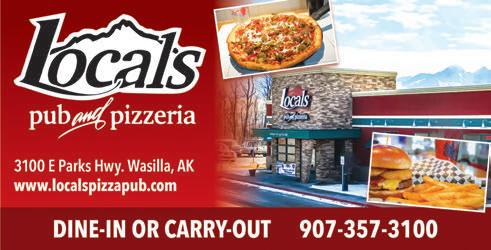












Contributed by Tabitha Wooster
One of the most striking and beneficial mushrooms you can find in the forest is Trametes versicolor, commonly known as Turkey Tail. Named for its fan-shaped caps that display colorful bands resembling a turkey’s tail feathers, this mushroom grows abundantly on fallen hardwood trees, stumps, and decaying logs. It can be found worldwide, from North America to Asia,
thriving in moist, wooded environments where it helps return nutrients to the soil. Its beauty in the wild is matched only by its long history of use in traditional herbal medicine. For centuries, Turkey Tail has been prized in Traditional Chinese Medicine, where it is called Yun Zhi, and in Japanese herbal practice, where an extract known as PSK has been widely studied. Its remarkable health value comes from its rich content of polysaccharides, especially polysaccharopeptide (PSP) and polysaccharide-K (PSK). These compounds act as immune modulators, helping the body’s defenses function more effectively. Rather than overstimulating the immune system, Turkey Tail sup -
ports balance—encouraging the body to respond appropriately when needed while also calming excessive immune activity. Turkey Tail also contains prebiotic fibers that nourish beneficial gut bacteria, which play a major role in immune health, digestion, and overall vitality. A healthy gut environment can improve nutrient absorption and reduce the burden of unwanted microbes. Additionally, its powerful antioxidants help protect cells from oxidative stress, which is linked to premature aging and chronic health concerns. Together, these qualities make Turkey Tail a well-rounded ally for maintaining resilience and energy in daily life. What makes Turkey Tail especially unique is its adaptability in both preventative care and complementary wellness practices. Some people use it to strengthen their everyday vitality, while others look to it for extra immune support during times of recovery. Herbalists often describe Turkey Tail as a mushroom that helps the body “stand its ground,” build-


Contributed by Coach Ken Hagler & Dr. Lauren Gagliano
You polish off dinner, flop onto the couch, and scroll your phone. Feels great, right? Not so much for your blood sugar. That comfy crash means glucose is flooding your system with nothing to slow it down. Here’s the surprisingly easy fix: get up and move for just two minutes. That’s it. A
walk to the mailbox, a loop up the stairs, a few squats by the counter, or even a silly kitchen dance. Those tiny bursts of movement can slash your blood sugar spike by nearly a third.
Don’t just take it on faith—science backs it up. A 2022 study in Sports Medicine found that standing or strolling around after meals reduced blood glucose levels by up to 33 percent compared with sitting still. The muscles get right to work
ing inner strength and offering steady support for long-term health. Its gentle yet effective nature makes it suitable for a wide range of people interested in natural approaches to wellness.
Many herbalists recommend Turkey Tail as a gentle yet profound support for those wanting to strengthen their immune system, recover from periods of stress, or bring more balance to their overall wellness routine. Whether taken as a tea, capsule, or liquid extract, Turkey Tail continues to be one of the most respected mushrooms in both traditional practice and modern research.
Disclaimer: This article is for educational purposes only and is not intended to diagnose, treat, cure, or prevent any disease. Always consult a qualified healthcare provider before starting any new herbal or mushroom supplement.
All About Herbs admin@allaboutherbs.com 4621 E Palmer-Wasilla Hwy #104
using that sugar, instead of letting it hang around in the bloodstream leading to insulin resistance and chronic disease.
The best part? You don’t need a gym membership or a workout plan. Think of these mini “movement snacks” as your built-in reset button—easy, fun, and surprisingly powerful in the fight against insulin resistance.
So, after your next meal, set a two-minute timer and move. Doesn’t matter how.
Just move. Your future self will be glad you did.
Healthy Together & Feeling Great is your local metabolic health team supporting your health! We provide 1 on 1 coaching with nutraceuticals, in-service presentations for local businesses keeping their teams healthy and even CEU credits. Visit us at www.alaskahealthy.live or email at alaskahealhy@gmail.com.
Contributed by Dr Magnuson
Anchorage Radiation
Oncology
Center
This October throughout Anchorage, Alaska, and the United States, we will celebrate the women who have or have had breast cancer while raising awareness and emphasizing the importance of early detection during Breast Cancer Awareness Month. We all know or love someone who has been diagnosed with breast cancer, as 1 in 8 women will be diagnosed with breast cancer at some point in their life. Despite the improvements in systemic therapy, radiation therapy and surgical techniques, the stage at which the cancer is detected is by far the greatest determinant of whether a patient diagnosed with breast cancer will be cured. Even with all the advancements that have made in the past decade, the 5-year survivability of stage IV (metastatic) breast cancer is only
32%, compared to 99% for stage I breast cancer and 87% for stage II or stage III breast cancer.
As a Radiation Oncologist, I meet with my patients once per week as they are undergoing treatment to see how they are doing and to help with any side effects that may arise. During these visits, patients often bring up their treatment regimen and compare it to that of their friends or family members. Patients with early-stage breast cancer may have a treatment that consists of radiation therapy and a daily pill after surgery, while some with more advanced disease may have one year of systemic therapy consisting of chemotherapy and immunotherapy, a total mastectomy with lymph node dissection and six weeks of radiation therapy. Conversely, patients with cancers caught early are often able to avoid chemotherapy, undergo a partial mastectomy (instead of a total
mastectomy) and receive shorter courses of radiation therapy. Early detection allows these patients to endure fewer side effects, have less disruption to their dayto-day lives and get back to their pre-diagnosis quality of life much sooner than those who must receive more intensive treatment regimens.
While some women may forego screening mammography due to cost, public health programs and recent legislation have addressed this barrier to care. For patients who meet income guidelines or are uninsured, multiple programs throughout Anchorage and Alaska can provide access to free mammograms. For patients who have insurance but are concerned about the cost of a mammogram or additional imaging that may be required after the screening mammogram, the passage of SB134 eliminates out-of-pocket costs for diagnostic and supplemental breast can-
cer screening services. SB134 also applies to those who meet income guidelines or are uninsured.
The United States Preventative Services Task Force (USPSTF) recently changed their recommendations from starting breast cancer screening from age 50 to age 40 because more women in their 40s are being diagnosed with breast cancer, as well as the fact that early detection saves so many lives. If you are reading this and grew up watching Scooby Doo or The Simpsons, remember playing Oregon Trail in school, or the sound of dial up internet, you are of the age where a screening mammogram is an integral part of your healthcare. If you have never had a mammogram or it has been more than a year since your most recent mammogram, please schedule your mammogram today.
Contributed by Sierra Winter, Community Relations Manager
Sunshine Community Health
Fall is in the air, the leaves are changing, and spooky season is here. But one thing you don’t want creeping up on you this October is the flu—or any other preventable illness. That’s why Sunshine Community Health Center is making it easier (and more fun) than ever to stay protected with free flu shots, spooky swag, and special event days throughout the month. Why immunizations matter: Every year, millions of people catch the flu. For many, it means a week or two of fever, body aches, cough, and exhaustion. But for others—especially young children, older
adults, and people with chronic health conditions—the flu can lead to serious complications like pneumonia, hospitalization, and even death. And it’s not just the flu to look out for—COVID-19 is still circulating in our communities. Staying up to date on vaccines helps protect not only yourself but also those around you who may be more vulnerable. Immunizations are one of the safest and most effective ways to keep communities strong, healthy, and safe.
October health incentive: To encourage the community to stay on top of immunizations, Sunshine CHC is offering free flu shots all month long, a limited-edition Sunshine t-shirt for everyone who gets their immunizations in October, and a
Spooky Season tumbler to take home while supplies last.
Special event days with snacks: Sometimes a little treat goes a long way. That’s why Sunshine CHC is adding extra fun to the month with snack days—October 20 at the Talkeetna Clinic and October 24 at the Willow Clinic. Come in for your immunization on those days and enjoy free snacks while you’re there.
One more opportunity: the Talkeetna Health Fair: If October is slipping by too fast, Sunshine CHC will also be at the Talkeetna Community Health Fair on November 1 from 8 a.m. to 12 p.m. at the Upper Susitna Community & Senior Center. Visitors can get immunizations, pick up swag, and take a big step toward protect-
ing their health this winter. Keep your community safe: Getting vaccinated is more than just a personal choice—it’s a way to protect loved ones and neighbors. Every shot helps prevent the spread of illnesses that can hit hard during the colder months. Staying up to date on immunizations helps reduce stress on healthcare systems, keeps schools and workplaces healthier, and keeps the community thriving. Don’t wait—schedule today: Protect your health, enjoy a treat, and take home some spooky swag this October. Call 907376-2273 to schedule your appointment today. For more information, visit sunshineclinic.org.










Calling all animal shelters, rescues, and vet clinics — Paws for Justice, a local community initiative sponsored by Crowson Law, wants to partner with you! We’re building a community campaign to help local pets find loving homes. Local organizations will feature the adoptable pets in the pages of The People’s Paper and on the airwaves of 95.5 The Pass KNLT-FM—and we’ll help coordinate free adoption events, promote them, and cover adoption costs or other services to help our furry friends find forever homes.
To learn more about Paws for Justice or to sign up to help today - call (907) 373-2698. That’s 3732698. Brought to you by Crowson Law Group— defending the injured and giving Alaska’s rescue pets a voice. Visit crowsonlaw.com to learn more.

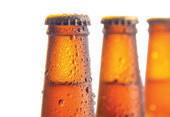

I am a confident, curious, and

I waste no time exploring my environment or getting to know my roommates. I make it my duty to survey every inch of my domain, including inside cabinets, drawers, and closets. I greet my cat roommates with cool confidence that puts the most skeptical of residents at ease. When it comes to humans, I currently prefer women but, with some patience and persuasion, I become more comfortable with men.
My love language is headbutts, which will be given frequently and forcefully in my quest for all your attention. I have some “Velcro kitty” tendencies and would love for you to pet me nonstop...but I will settle for a cozy spot next to you if I must. I enjoy supervising my humans in all their work, especially if I can rub my face on a laptop.
I will need a safe outdoor area to fully exercise my curiosity and have shown a great interest in string/ribbon toys. I would like a kitty friend in my new home and am fine with a respectable dog. I think I would like to be picked up and held, but tend to splay my claws when uncomfortable, so older children would be best.




I am the sweetest boy and just want to love and be loved. I am so gentle and will be the perfect kitty for a settled home with another nice cat who would love a kind, loving friend, and for people who appreciate a home without chaos.
I love to cuddle and get belly rubs and am definitely a lap cat. I am shy at first so I will need a little of your patience while I’m getting comfortable. I am very friendly with other cats, but I don’t know about dogs yet. I am fine with kids as long as they are calm and gentle.
I am about a year and a half old and will make your heart happy.
I am in Anchorage but could make the trip to the Valley for the right family. To meet me, please call or text 907-980-8898.

am a blue-eyed, soft as a cloud ragdoll mix. I have muted earthy colors blended into my ivory coat like most ragdolls, and I have extra special huge paws. I love other nice cats and will be the best buddy to a cat friend. I will take some time to settle in and reveal how sweet I
am. A cat buddy will be a help to show me the ropes of the house. I am a sweet, gentle boy for a family
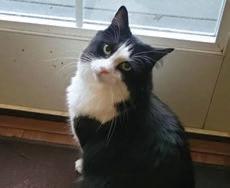





Contributed by Angie Lewis, President of Alaska Animal Advocates
Dogs have a number of different jobs and can often be trained to learn skills that can help them ex-cel in a variety of jobs – all of which benefit mankind. I will review some of these jobs and the training involved.
One important role that a dog can work toward is to become a service dog. A service dog is a work-ing dog that provides assistance to an individual or group of people with specific special needs. There is very specific training process that these dogs must acquire in order to be qualified as a service dog. These dogs are legally not supposed to be pets and they are permitted access to busi-nesses or food service establishments. These dogs typically wear a harness or vest that helps to distinguish that the dog is not a typical dog. The general public is encouraged to not interact with these dogs so as not to distract them from the job they are required to do.
A newer category of help for handler’s support dogs is autism support dogs. Social interactions are very difficult for people with autism, especially children. These dogs help individuals with autism to enter social situations and increase confidence. Also, children with autism tend to wander off and get lost, so these dogs help
to keep track of them. Most of all, these dogs provide incredible friend-ship and partnership.
Psychiatric support dogs provide support to individuals experiencing various mental disorders such as PTSD, depression, anxiety, or bipolar disorders. These support dogs will help calm down a stressed person and make sure that their personal space is not invaded.
The kind of help that these dogs provide depends upon the disability or needs that the person has. Examples might be opening doors, getting dressed, helping with mobility issues, running errands or helping with medical needs. Guide dogs are the original and most recognized service dogs. Guide dogs help blind or visually impaired individuals navigate the environment. They can be recognized by wearing a harness that includes a bar for the handler to hold onto as they walk through the area. Something interesting about the relationship between the handler and the dog, is that the dog can be disobedient toward the handler, indicating that the dog knows better than the human if there is danger ahead. So that, if the handler wants to go in a certain direction, the dog knows better and will steer him in another direction.
Another job that a dog can have is becoming a therapy dog. These dogs provide

emotional support when the person is stressed or frightened. The dogs do this by sitting close to the person, embracing them or laying on top of them. These dogs learn to recognize when their person is getting worked up and they provide the strategies needed to help their handler calm down. There is less formal train-ing expected for these dogs.
Search and rescue is a job that trains dogs to search for missing people in disas-

ters or wilderness situations. These dogs are skilled at nose work and can usually use their sense of smell to track down a lost person. Again, these dogs are not to be disrupted from the important work that they do.
Military and police dogs are trained to detect explosives, drugs, or to apprehend criminal suspects.
Herding dogs deal with livestock by helping farms to herd animals.






